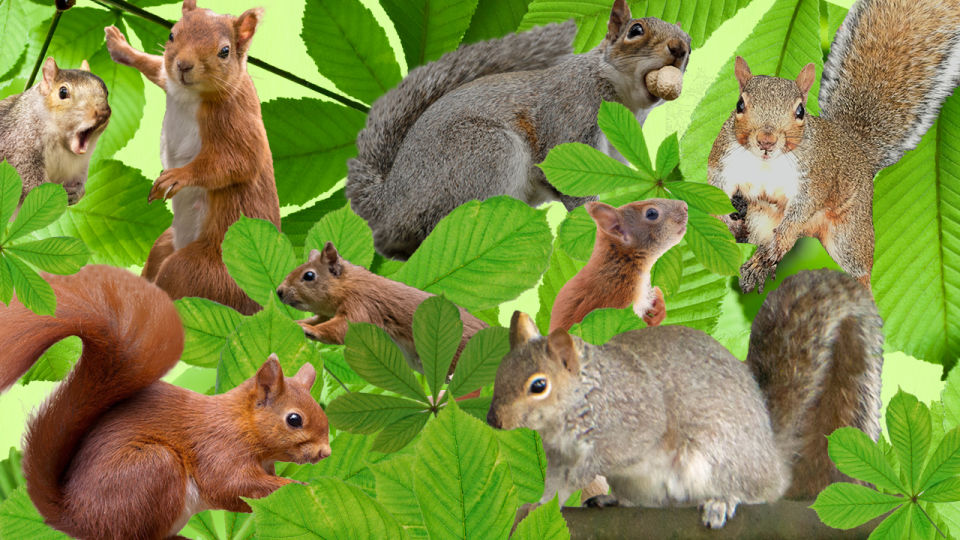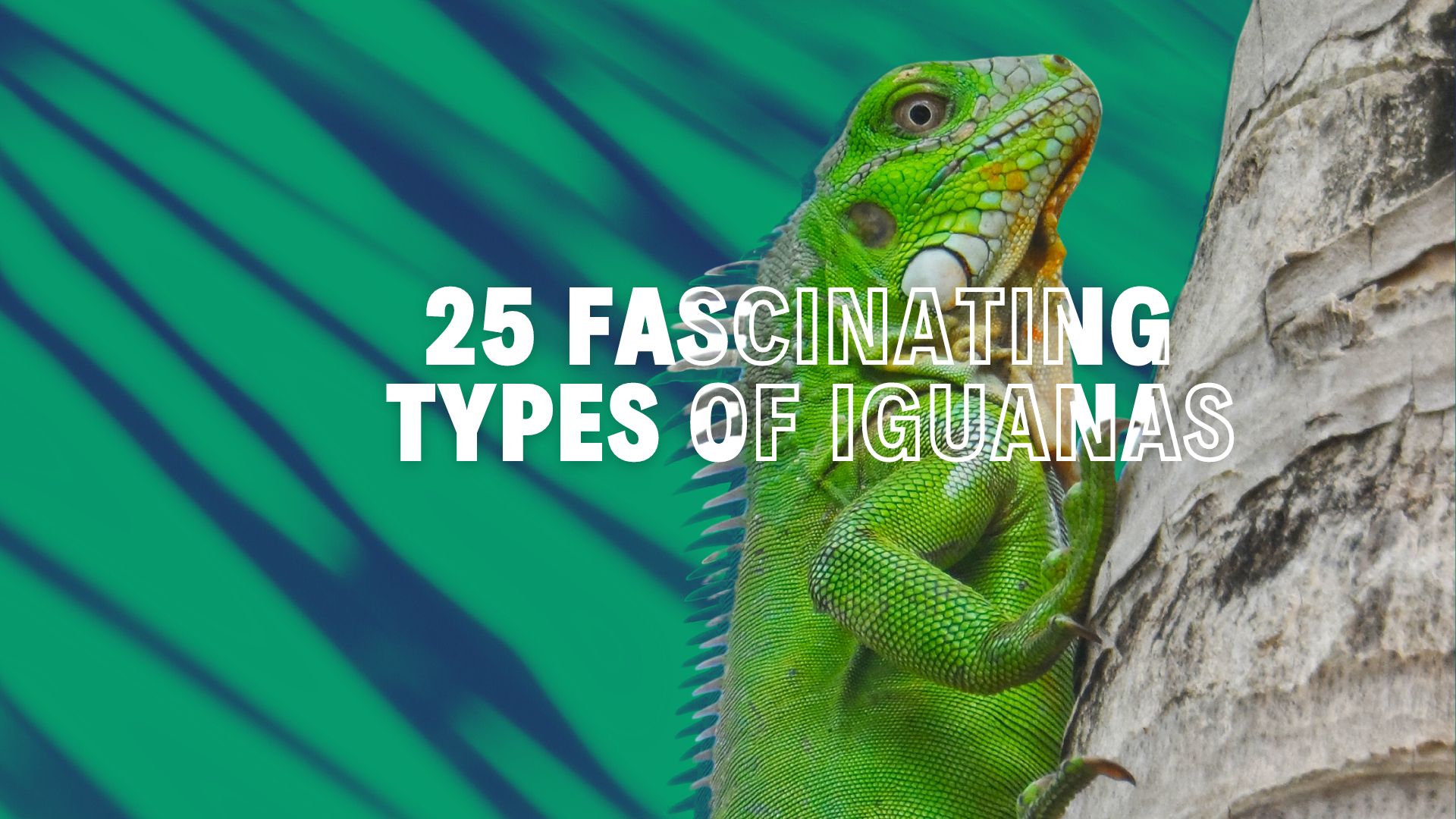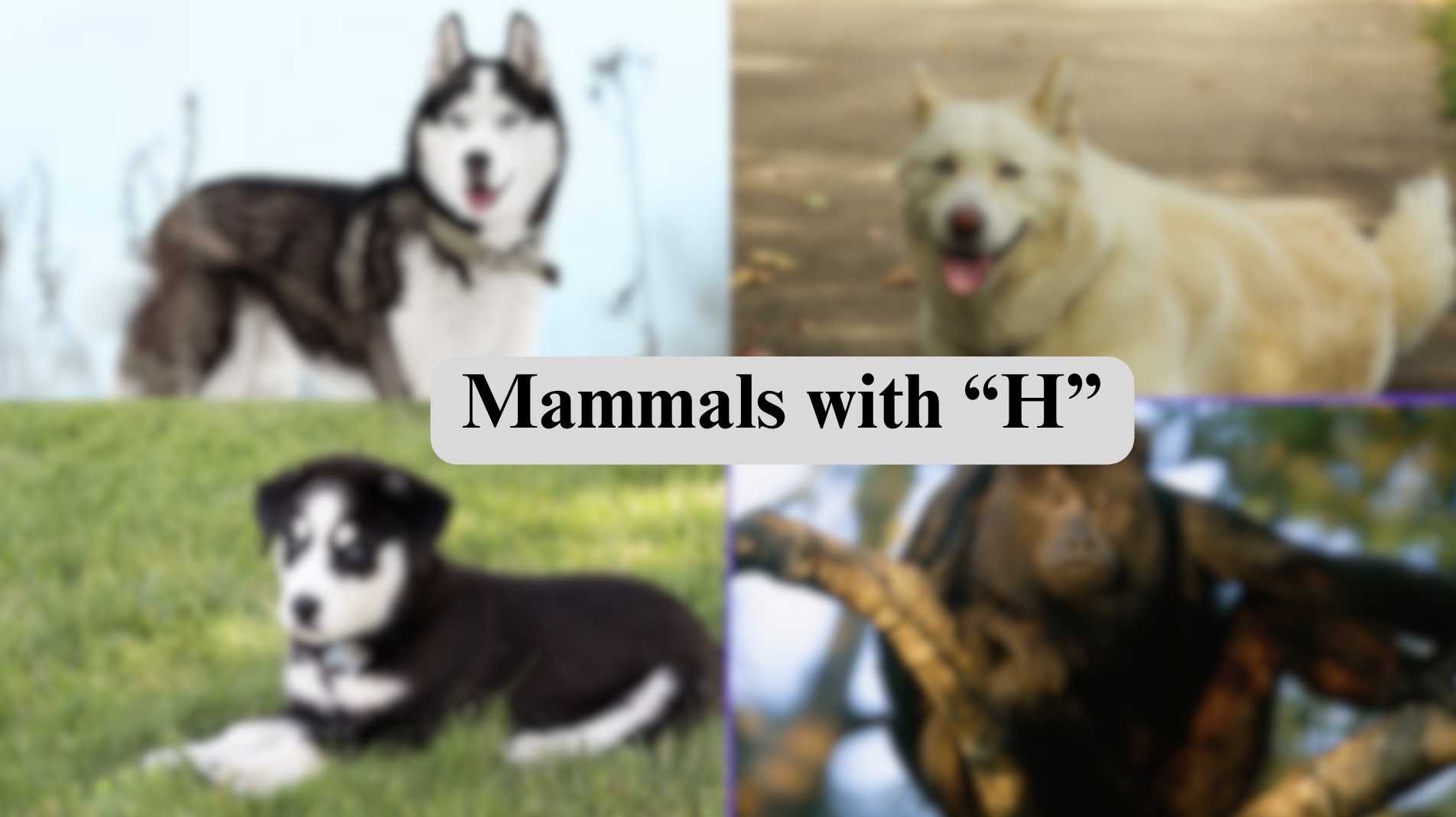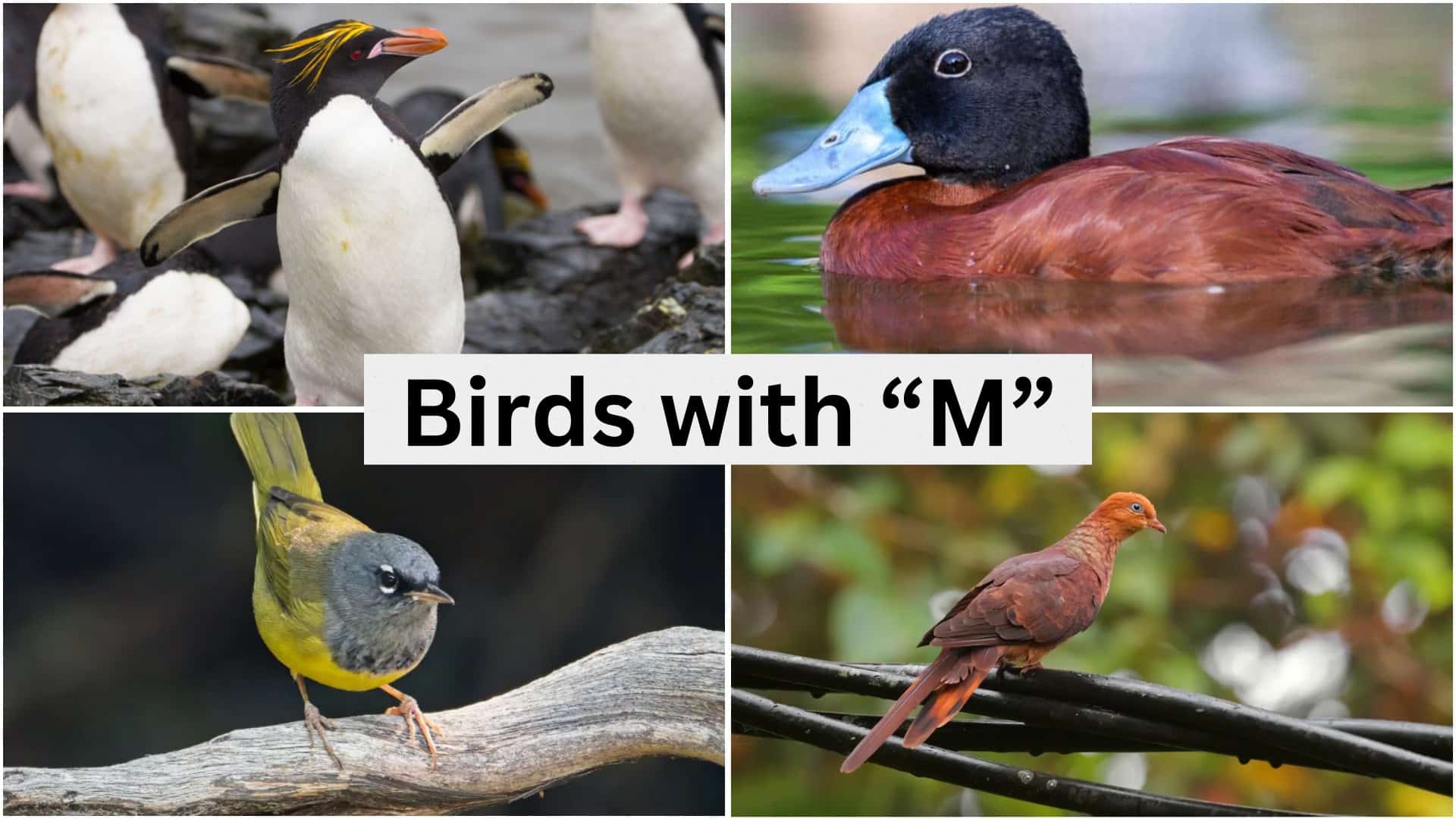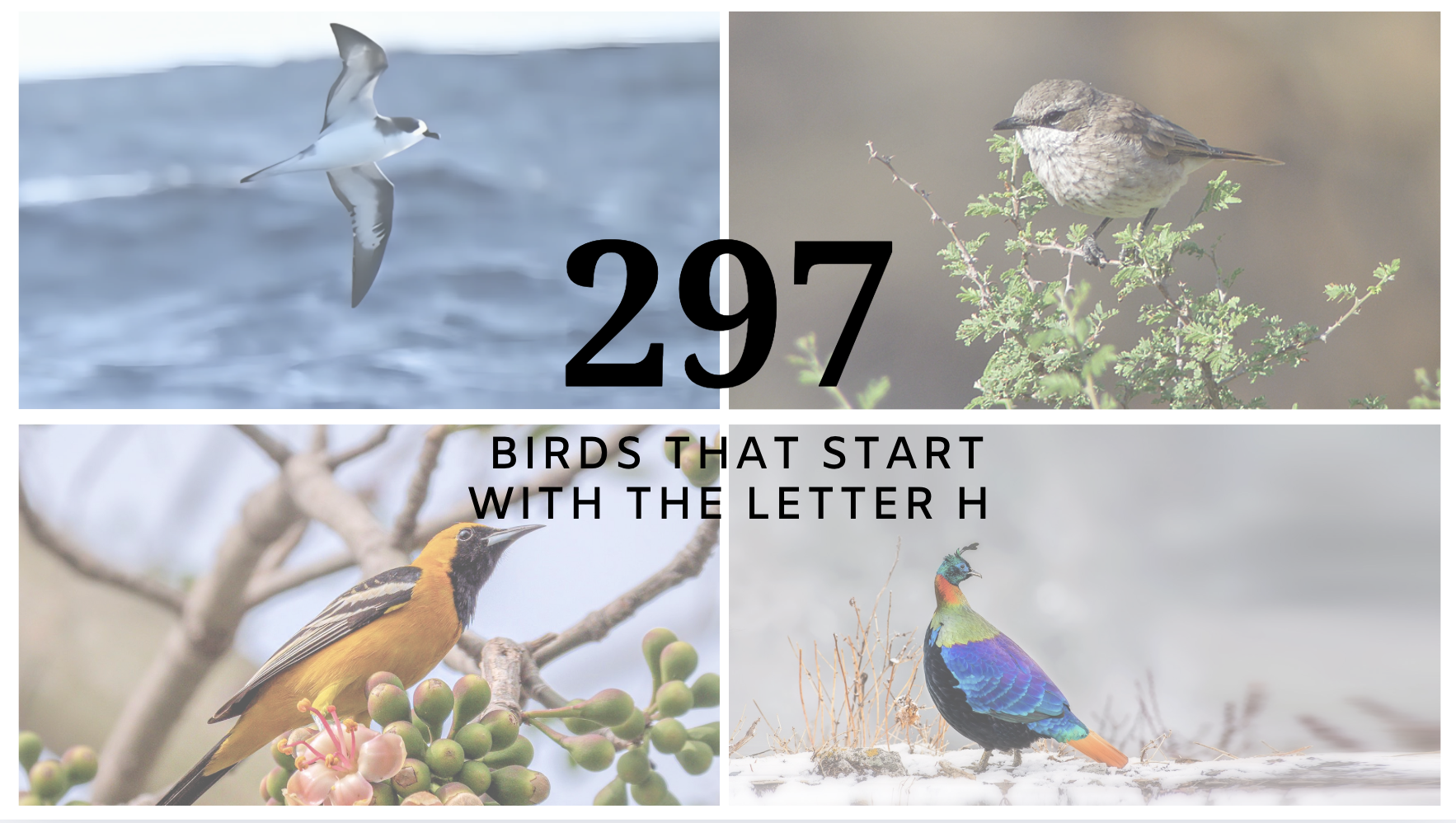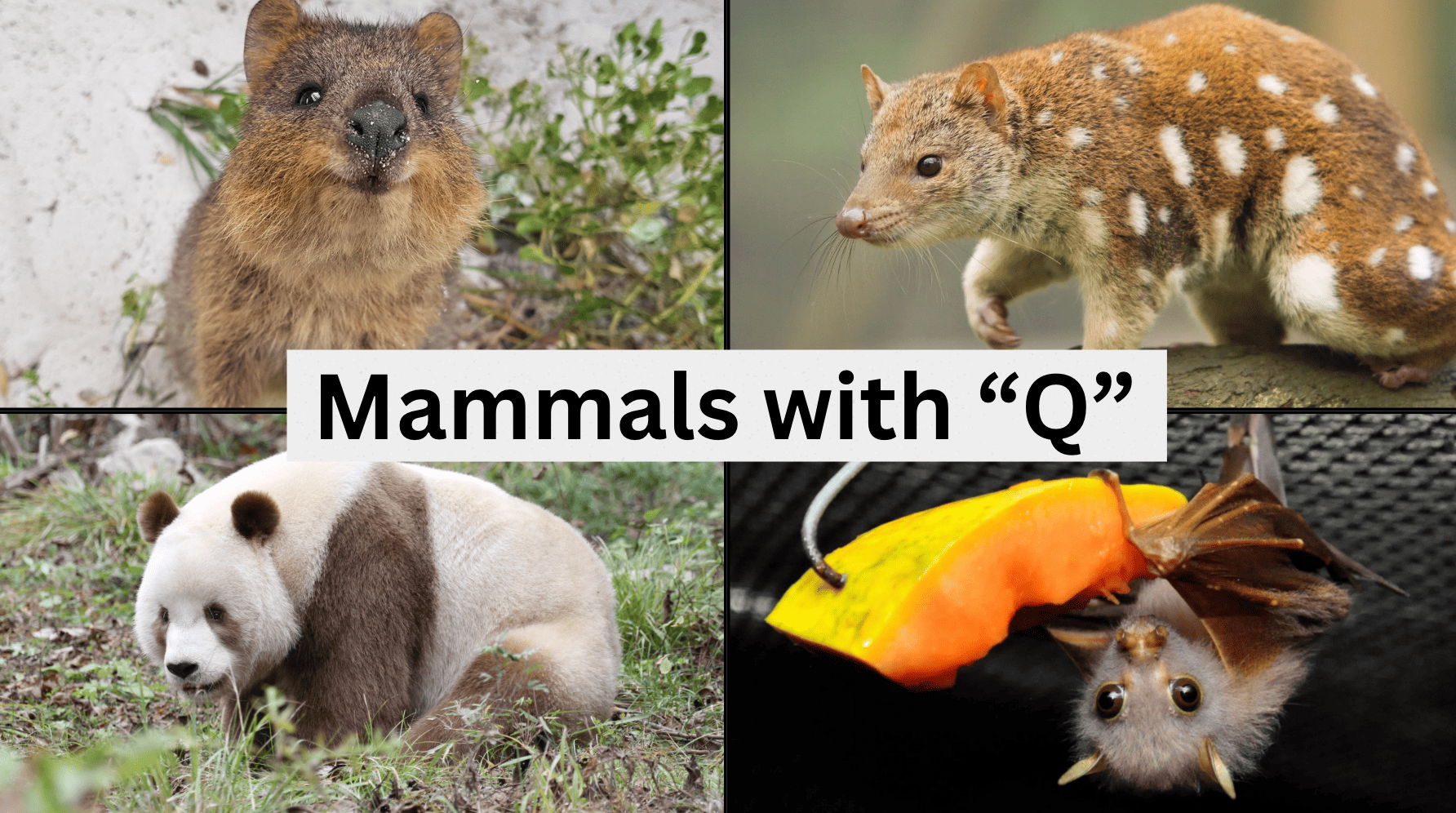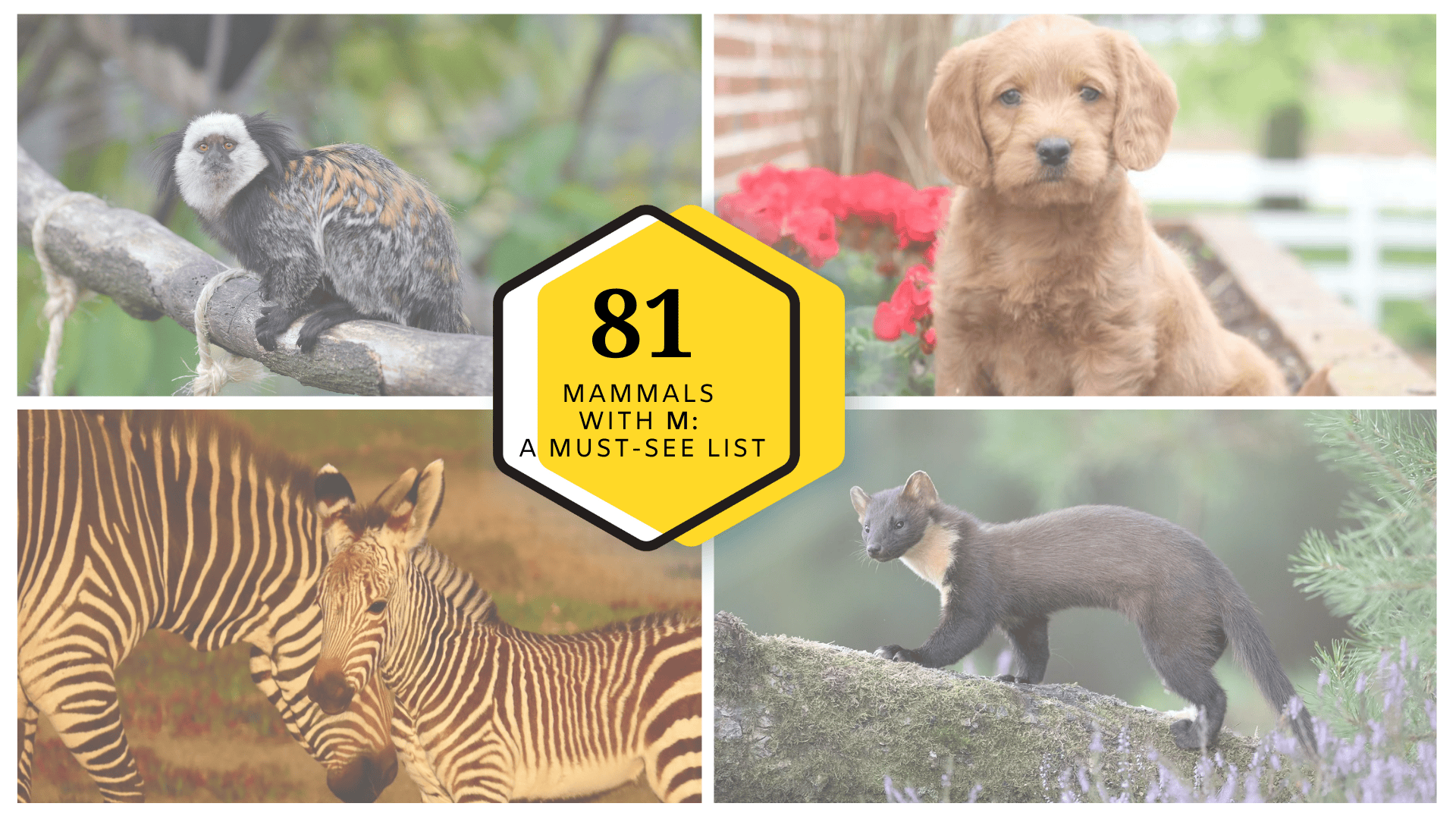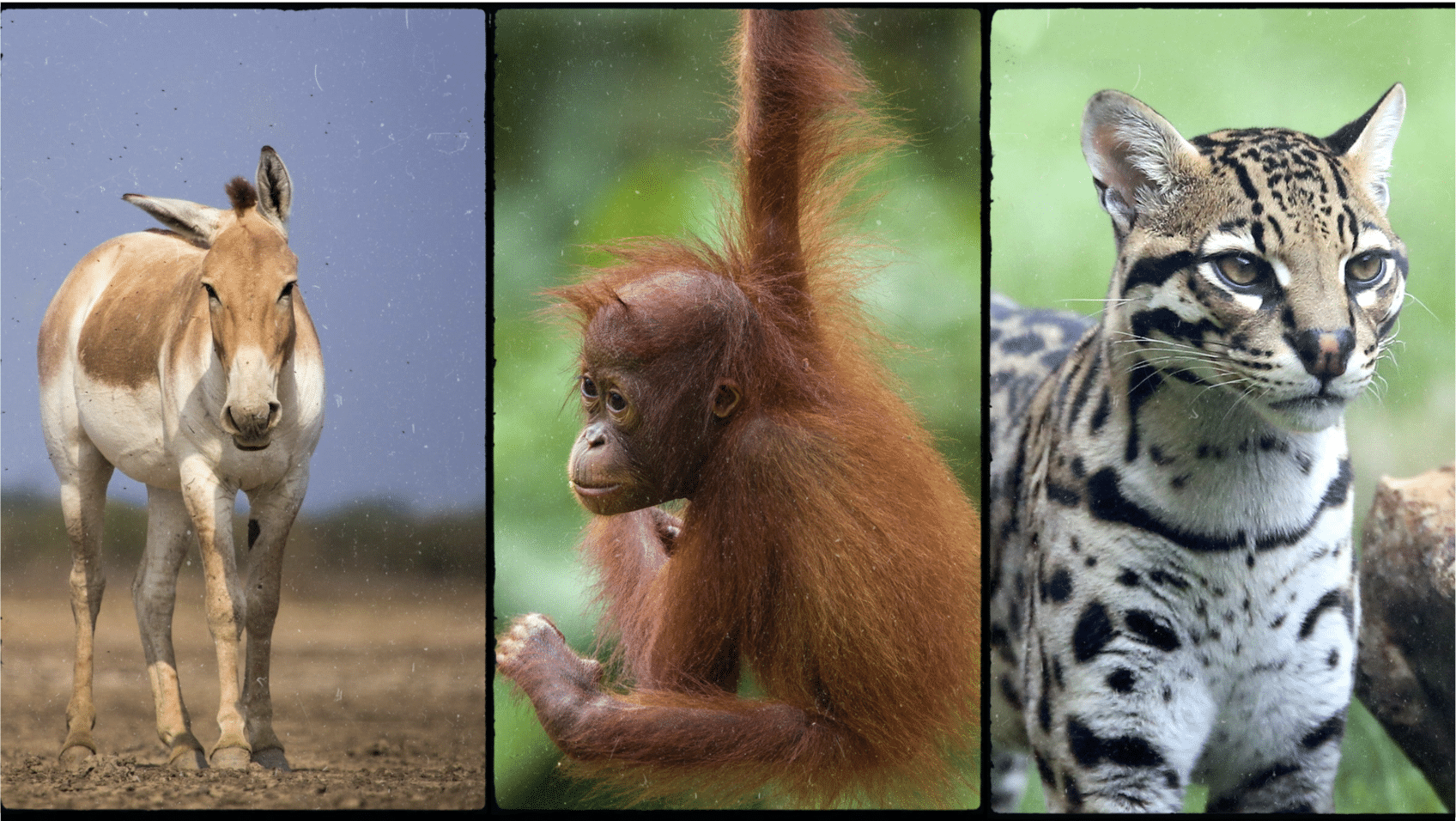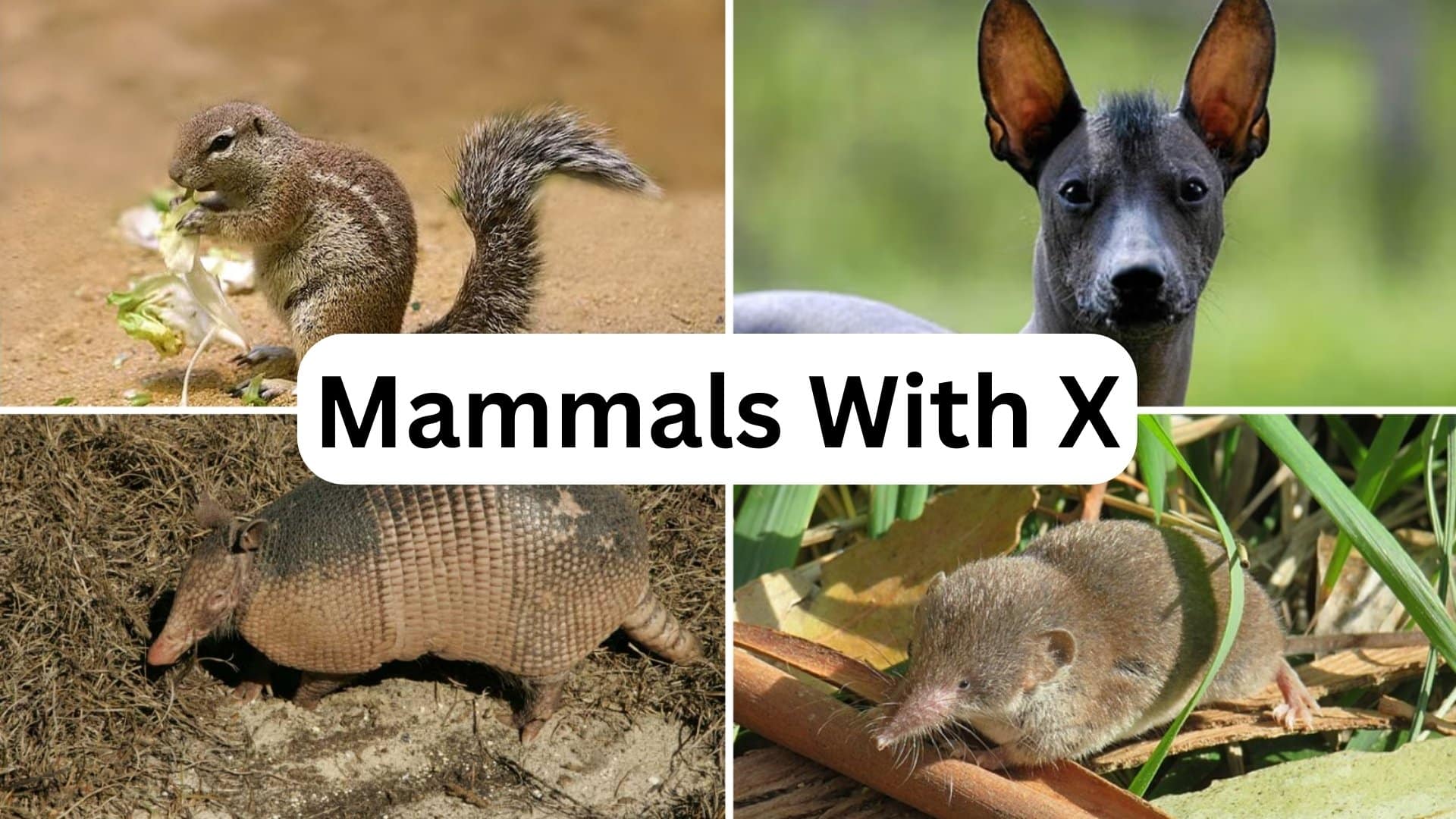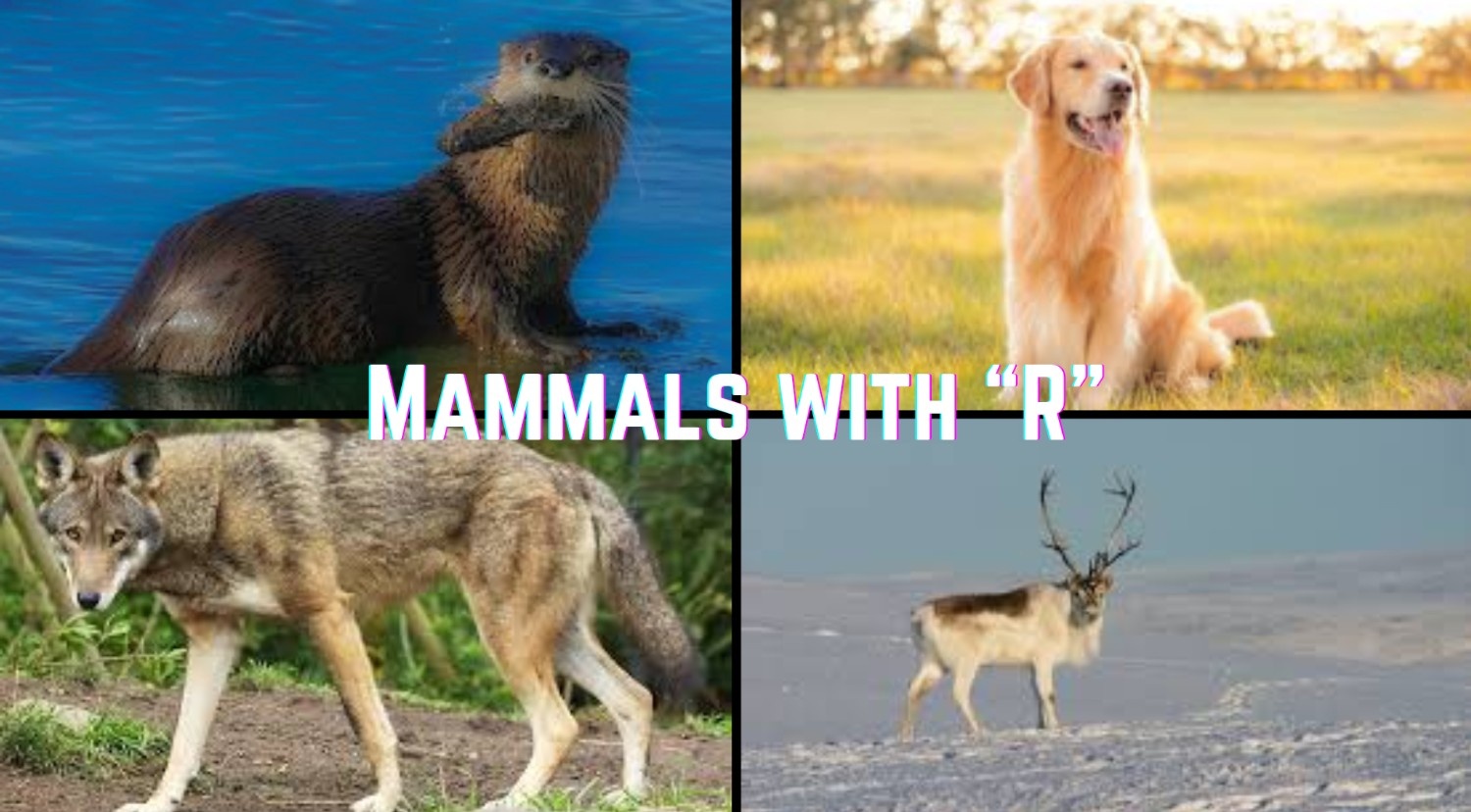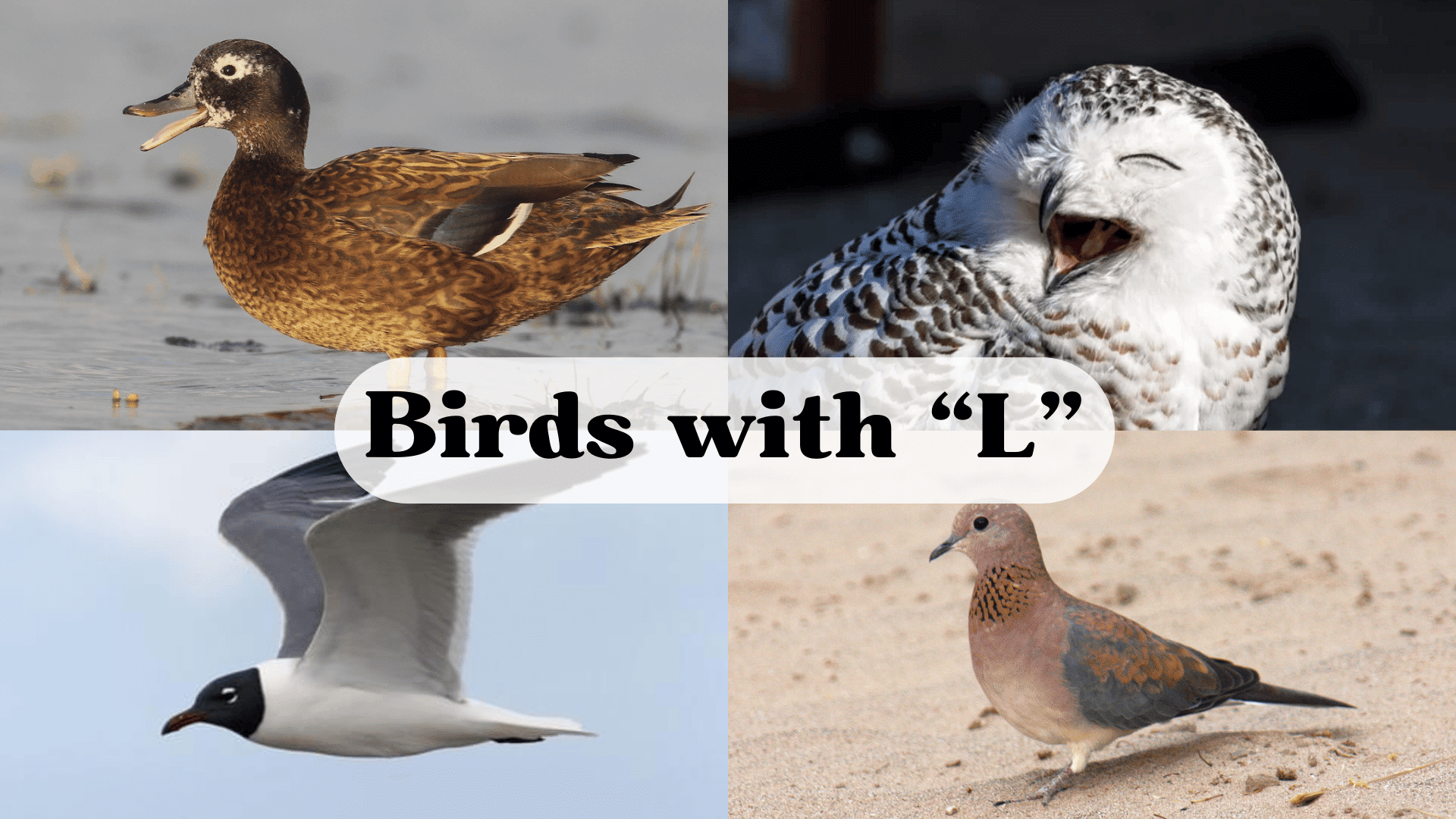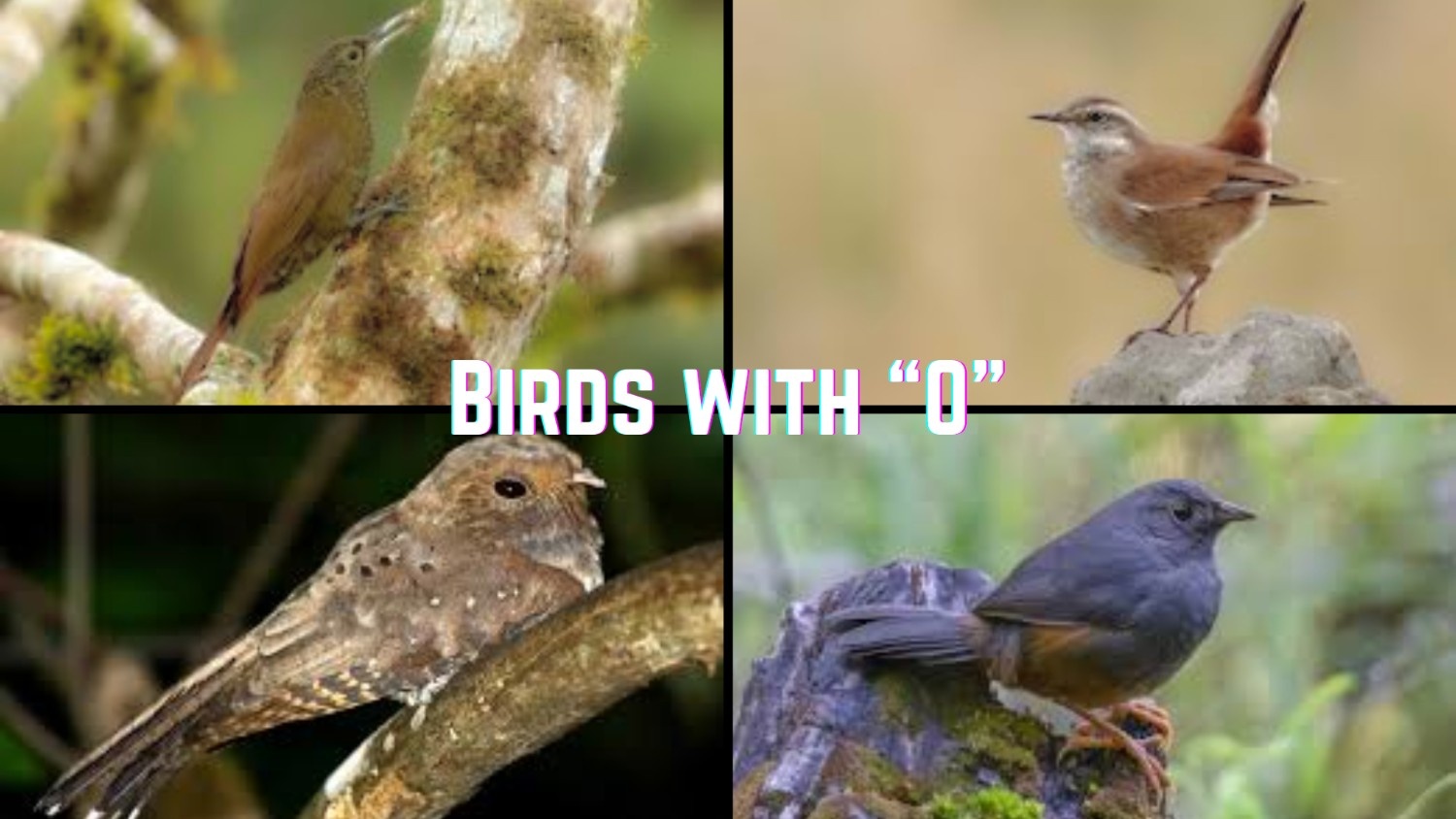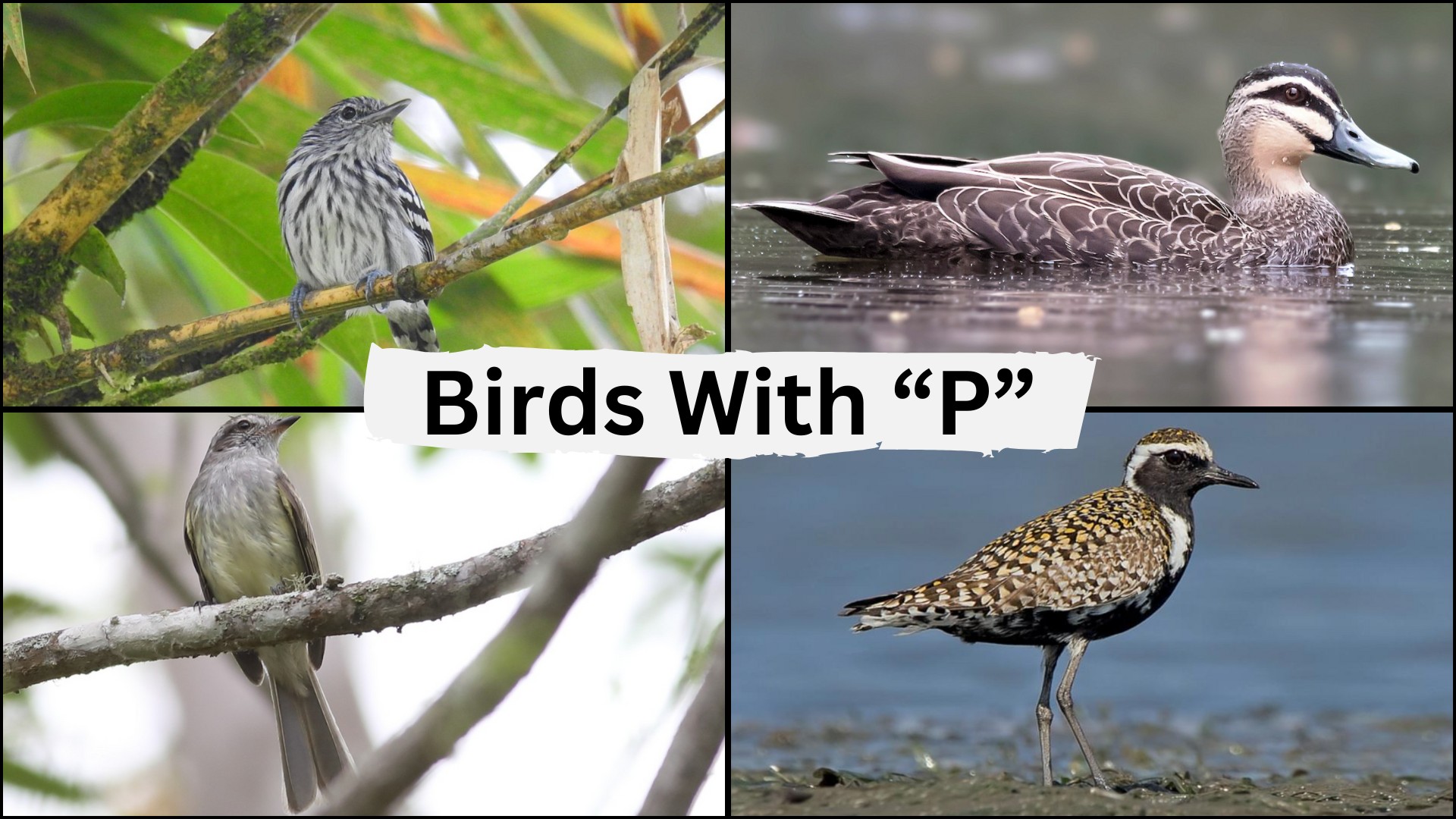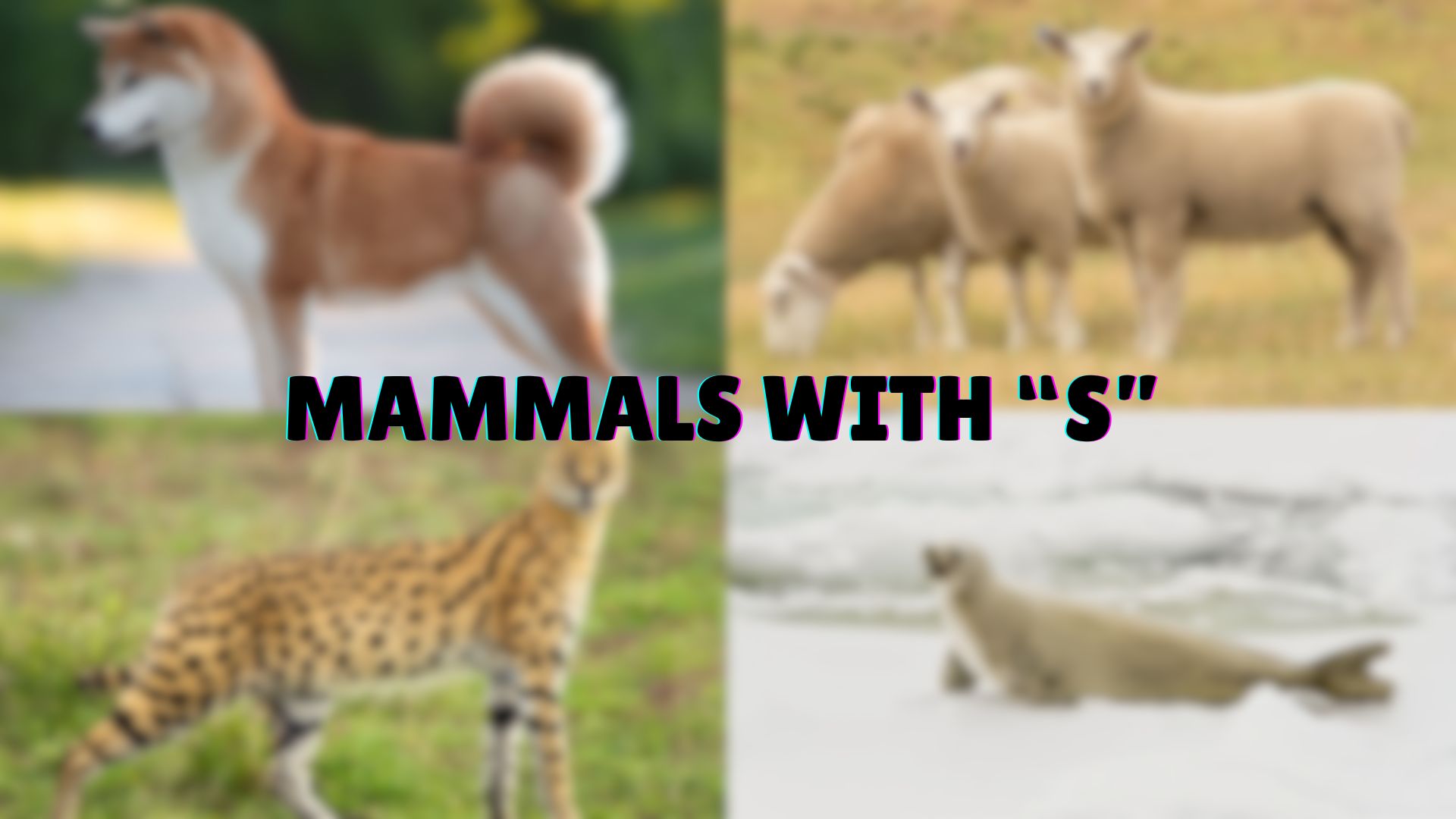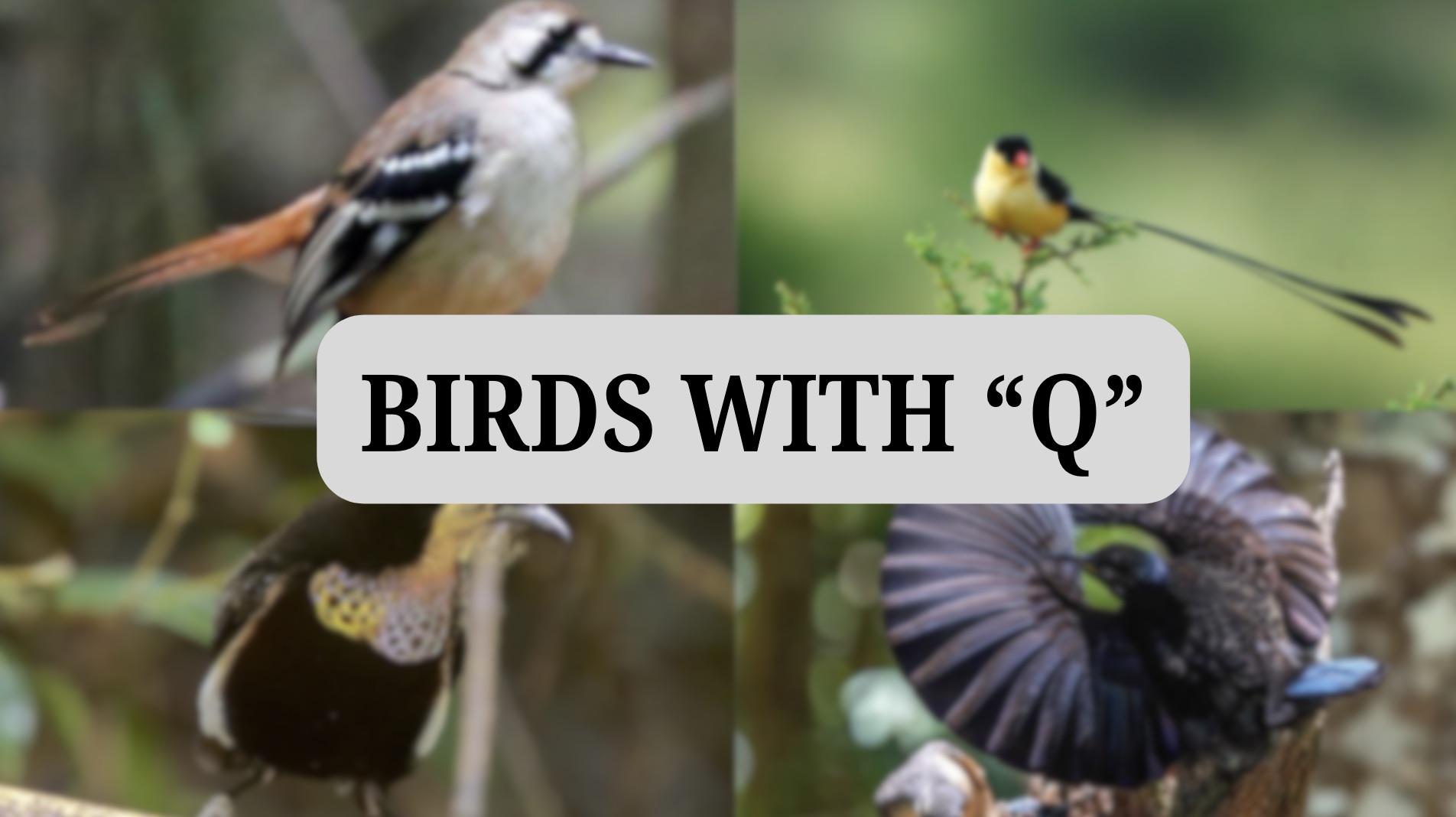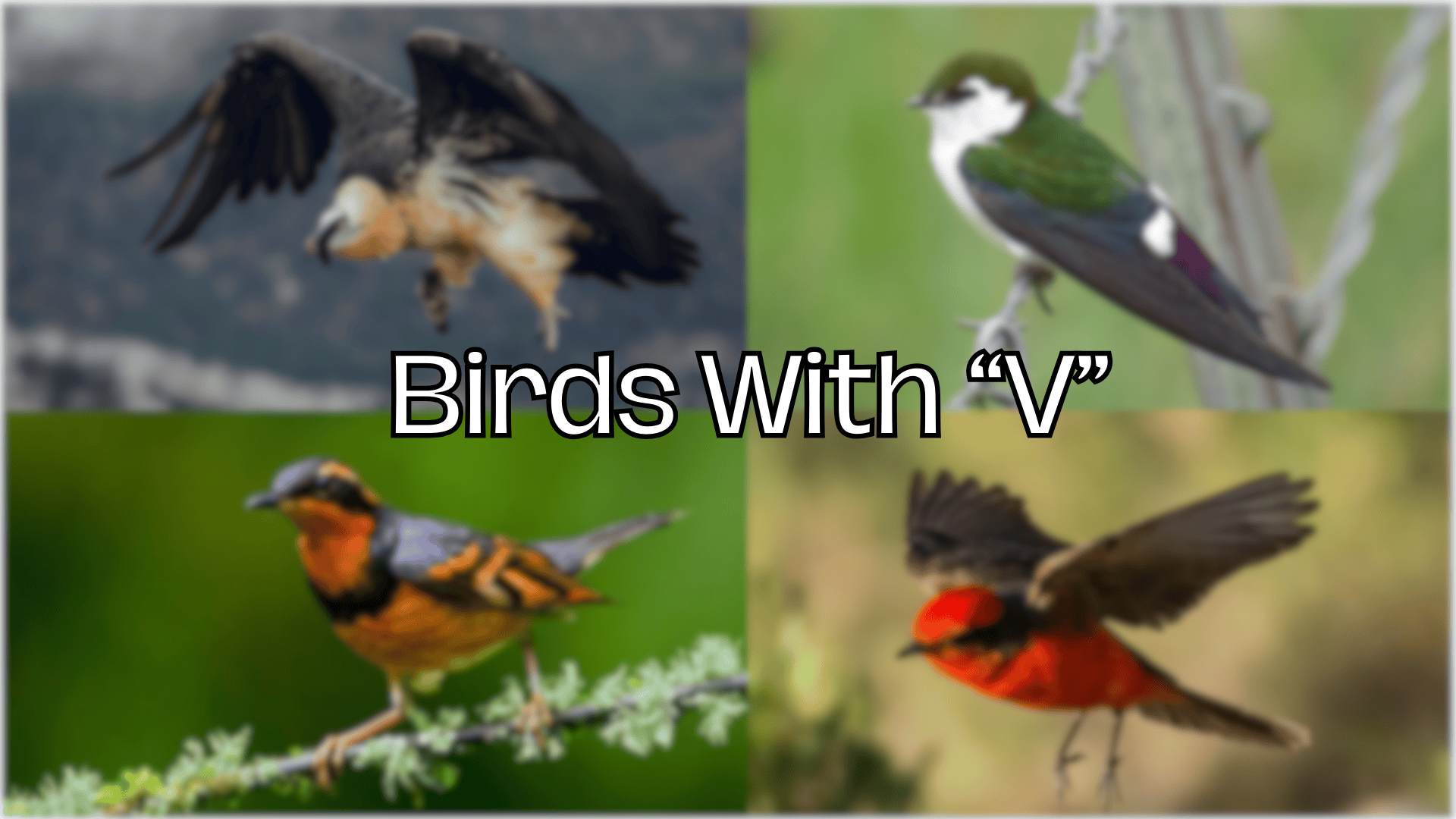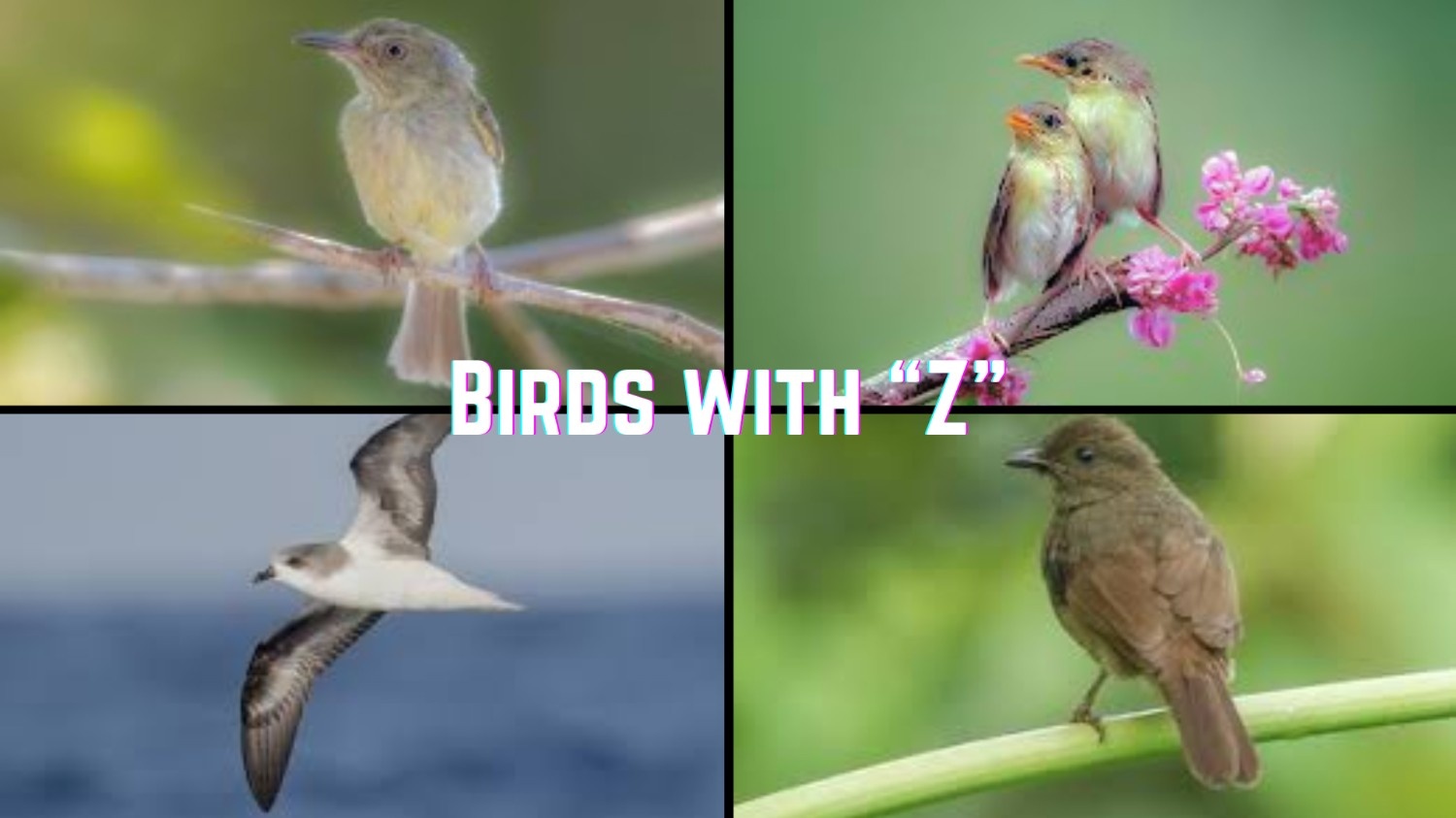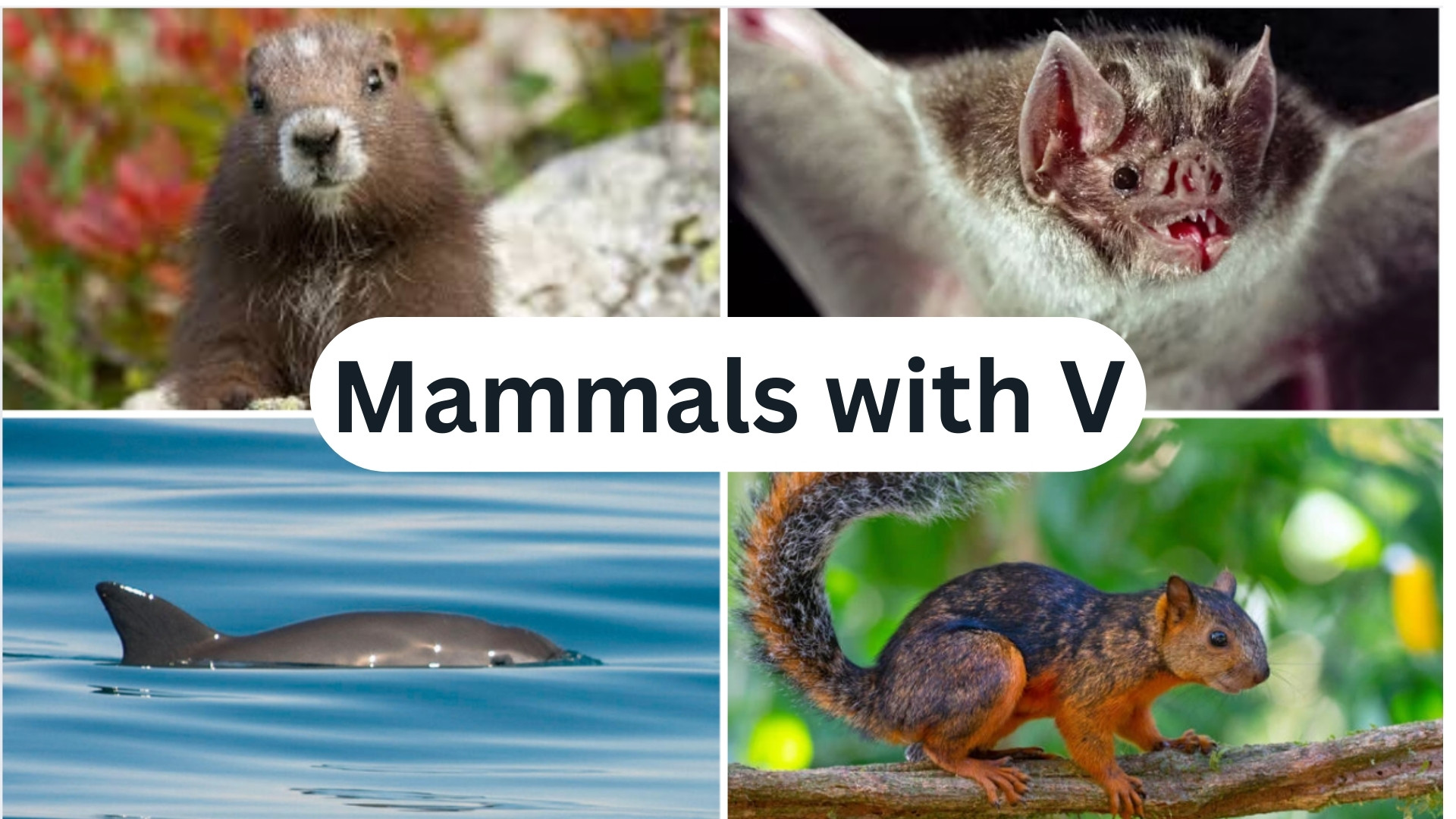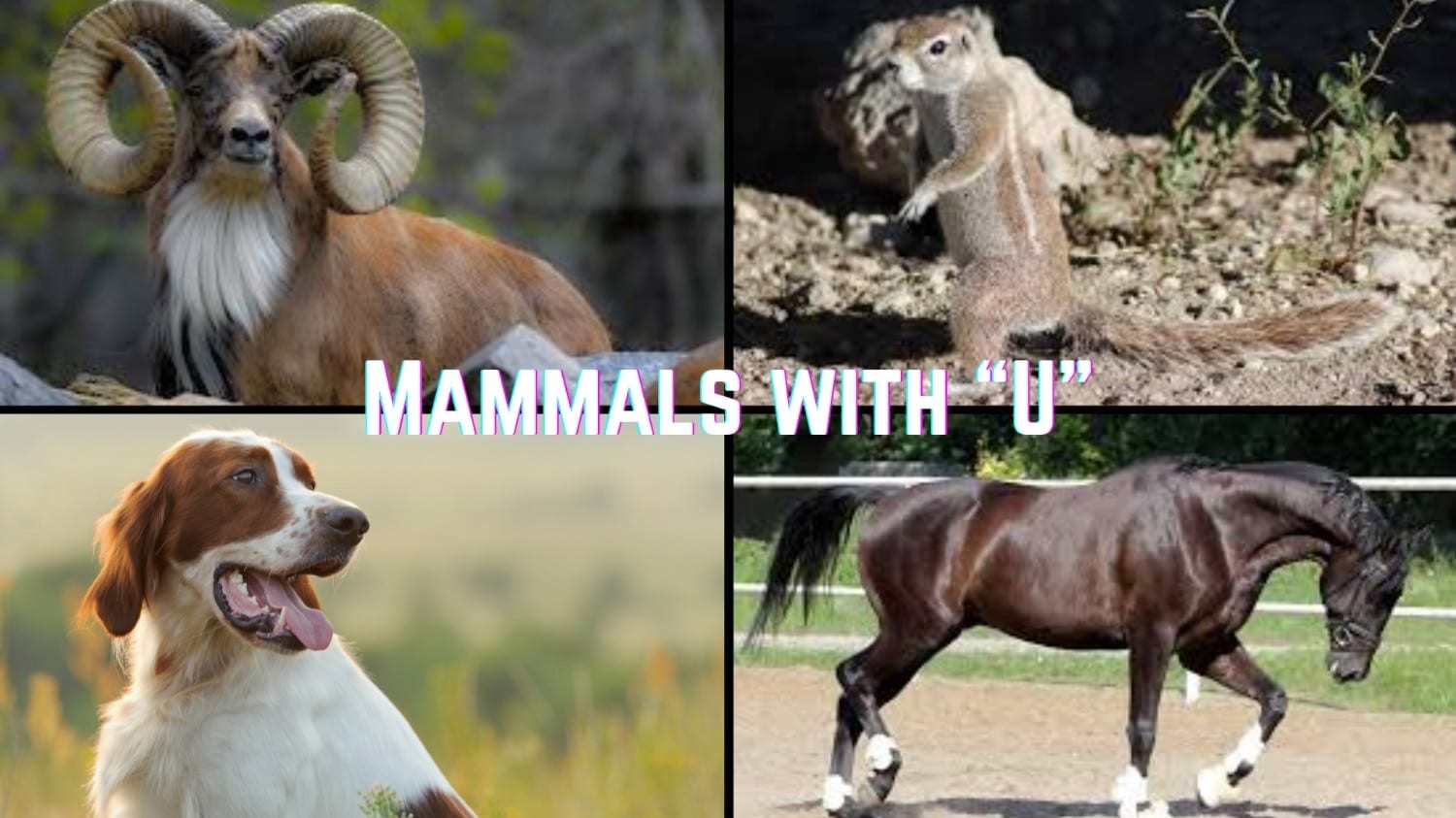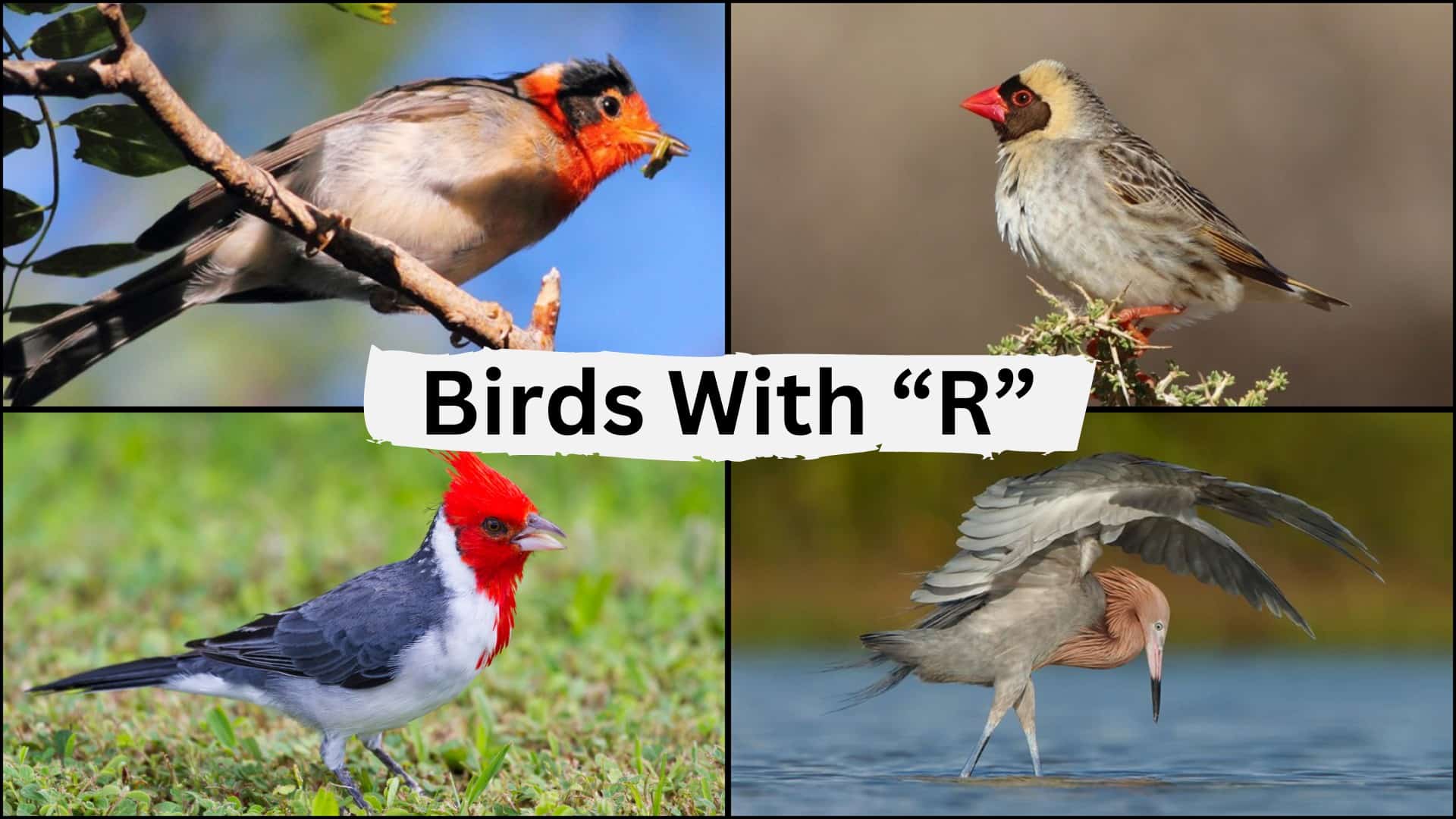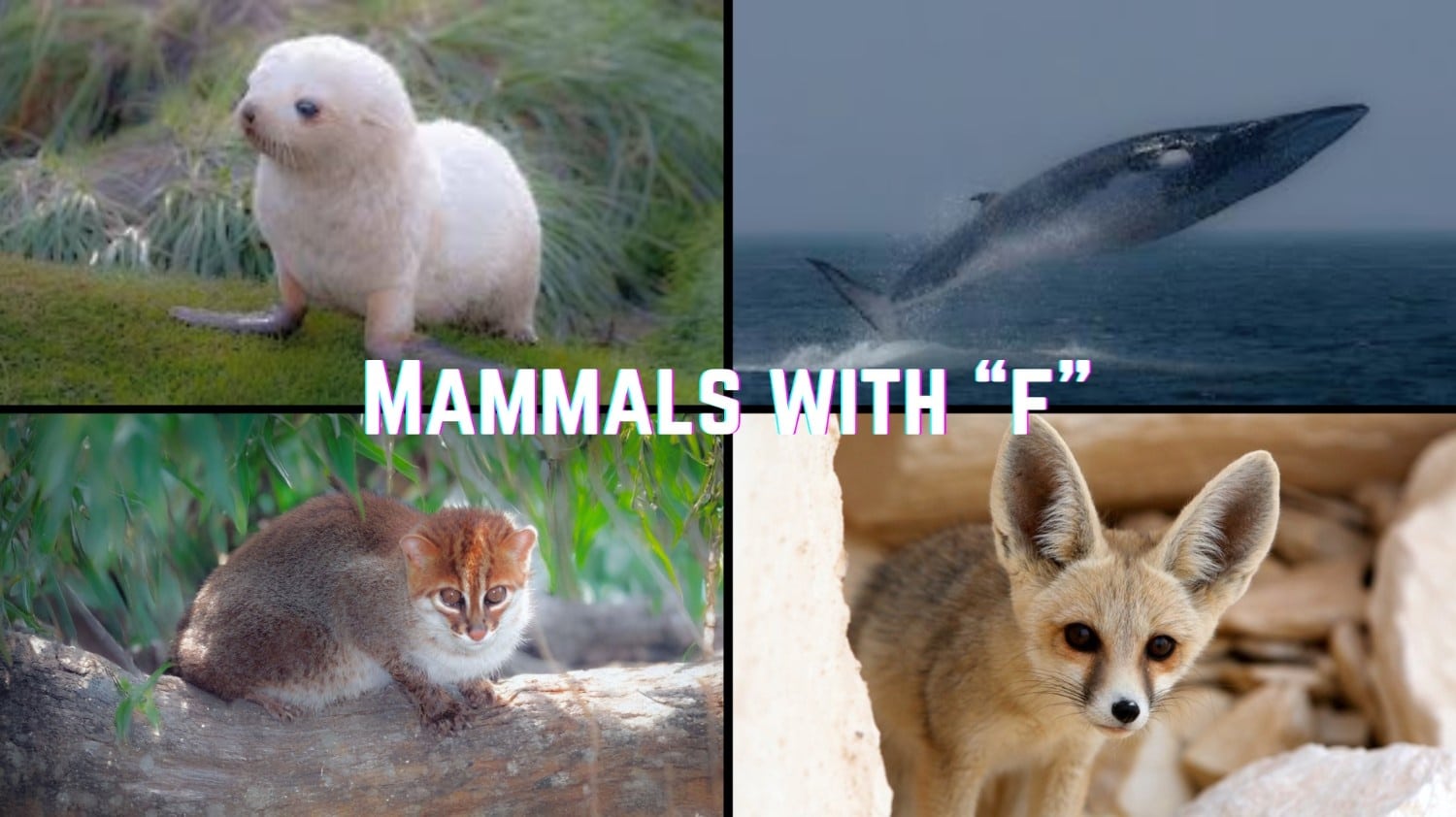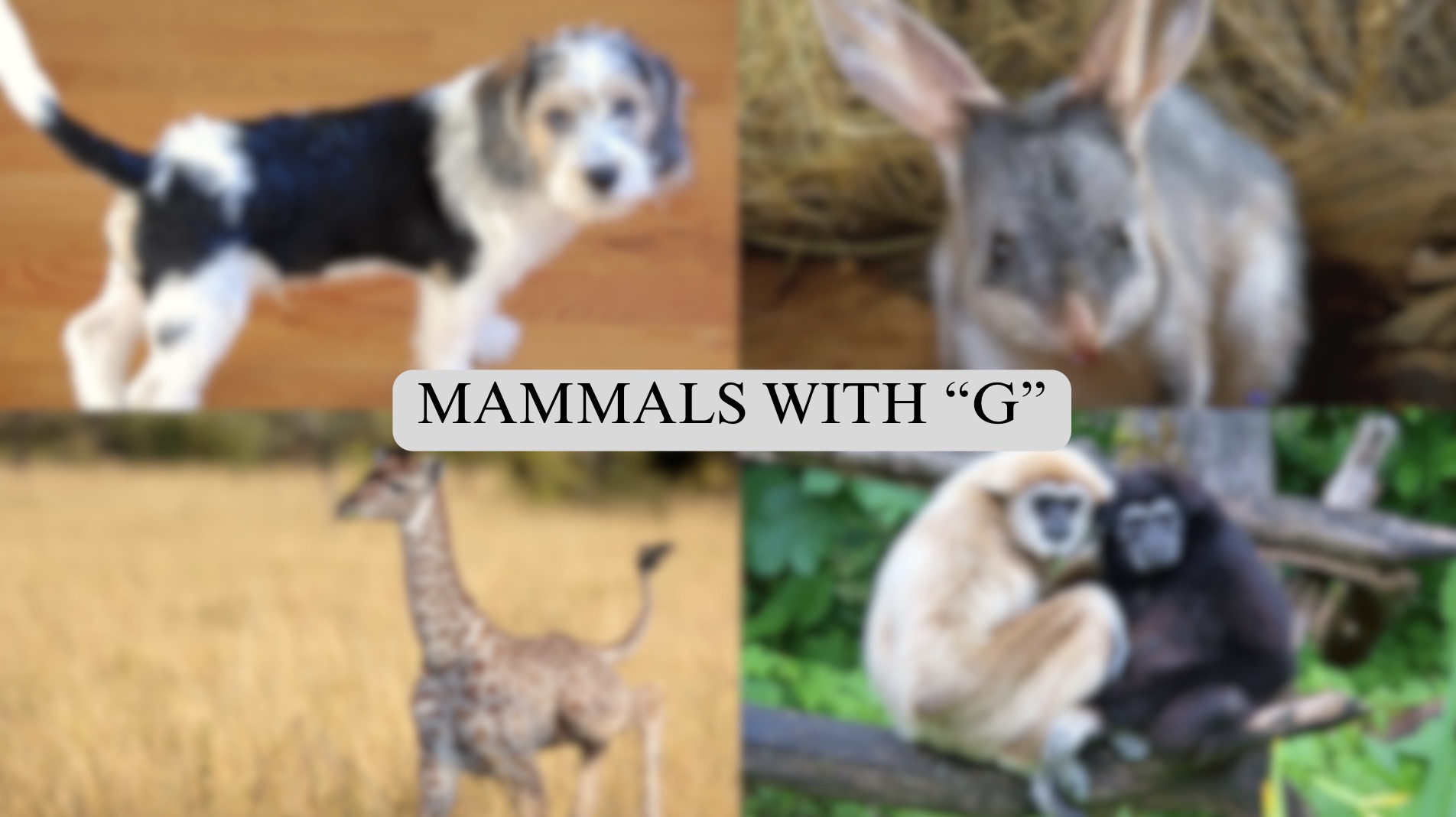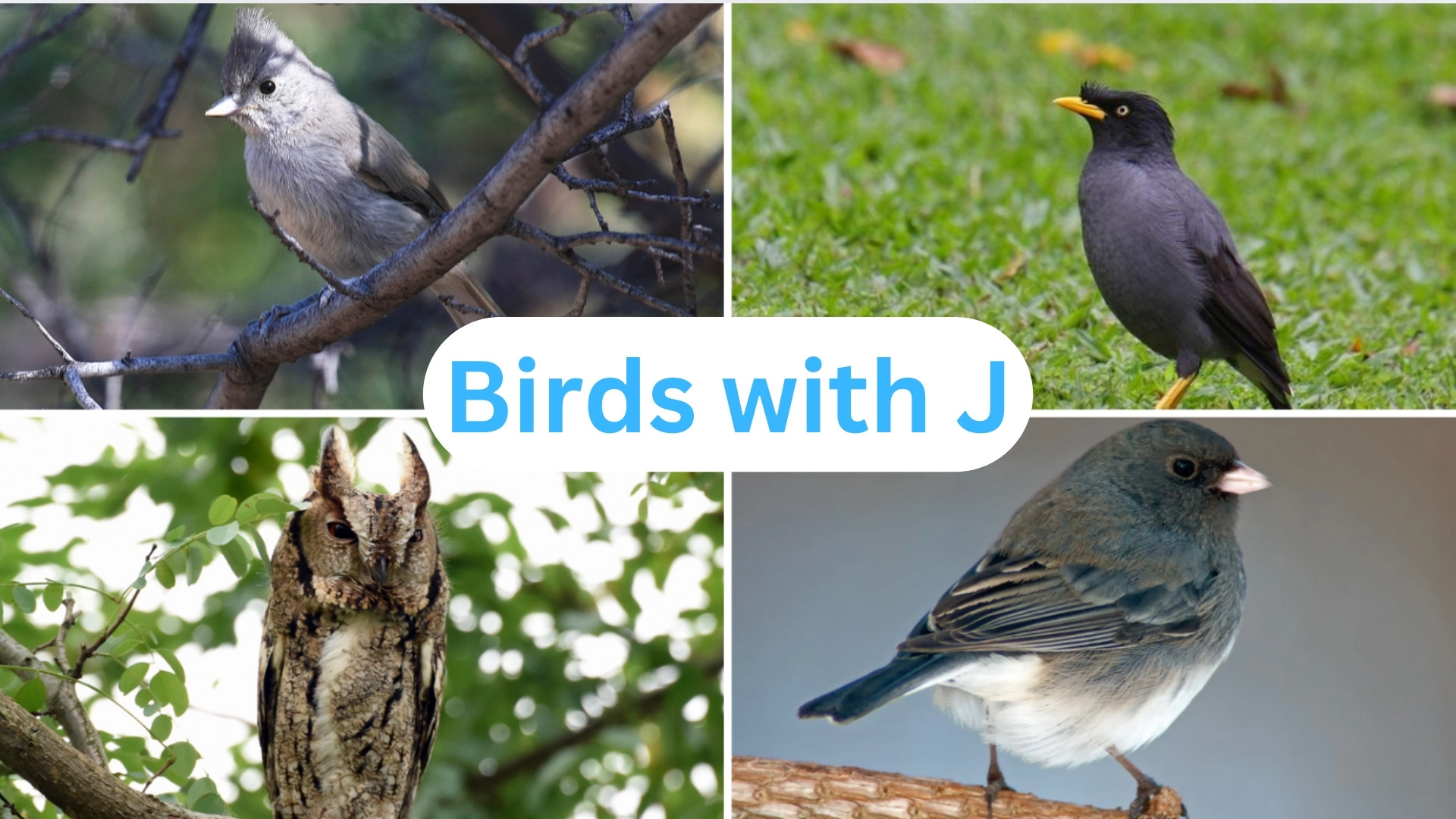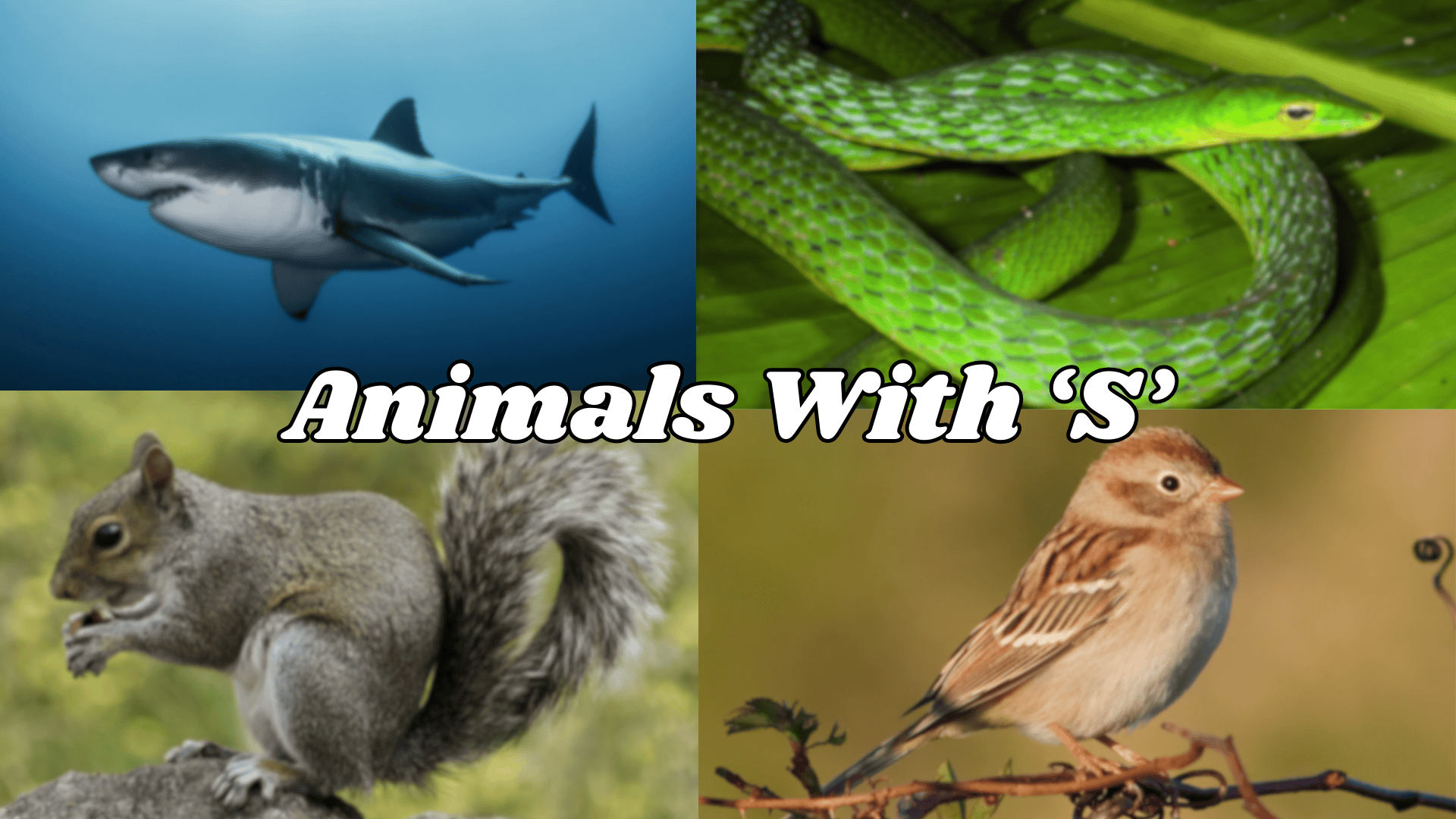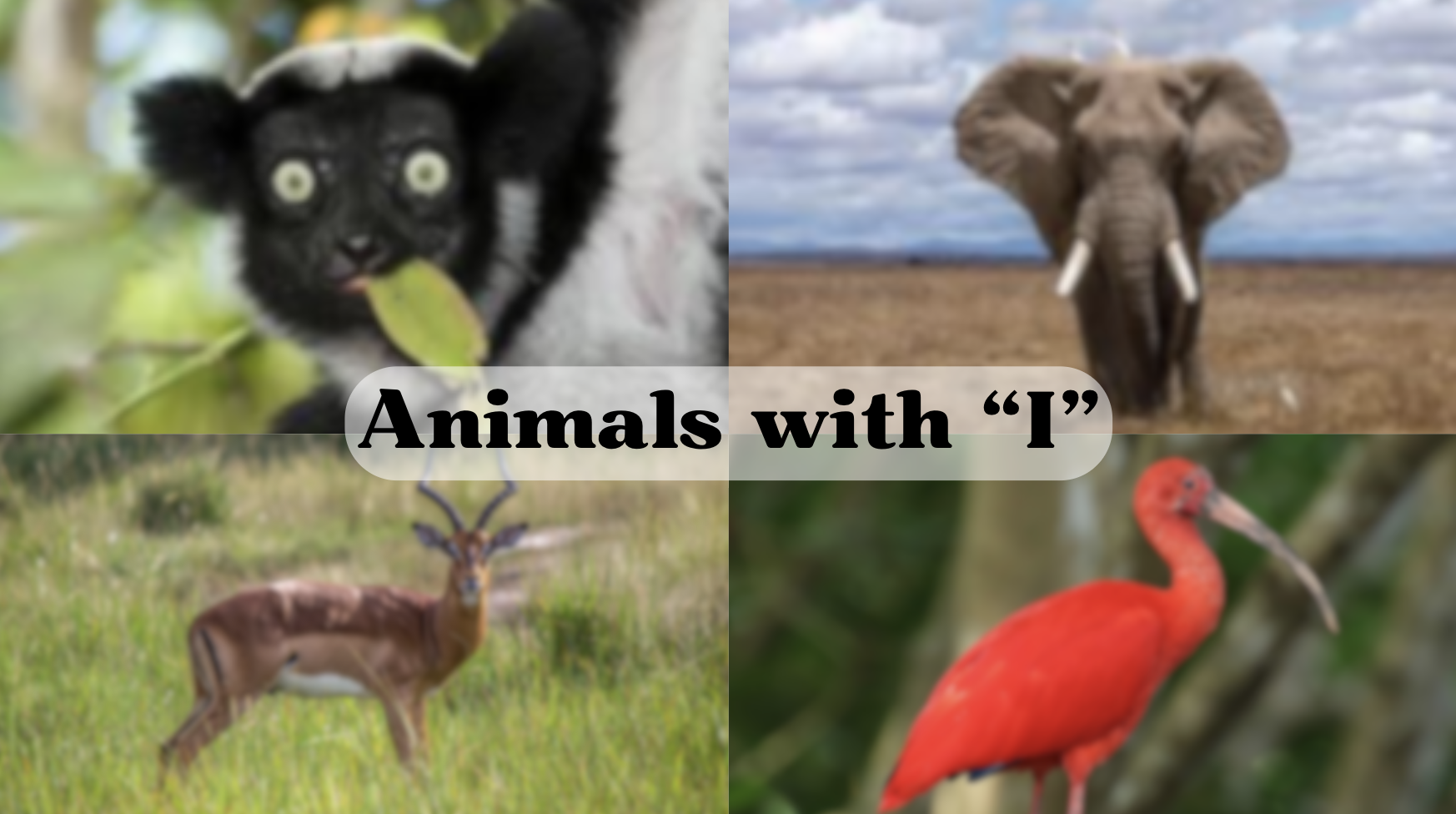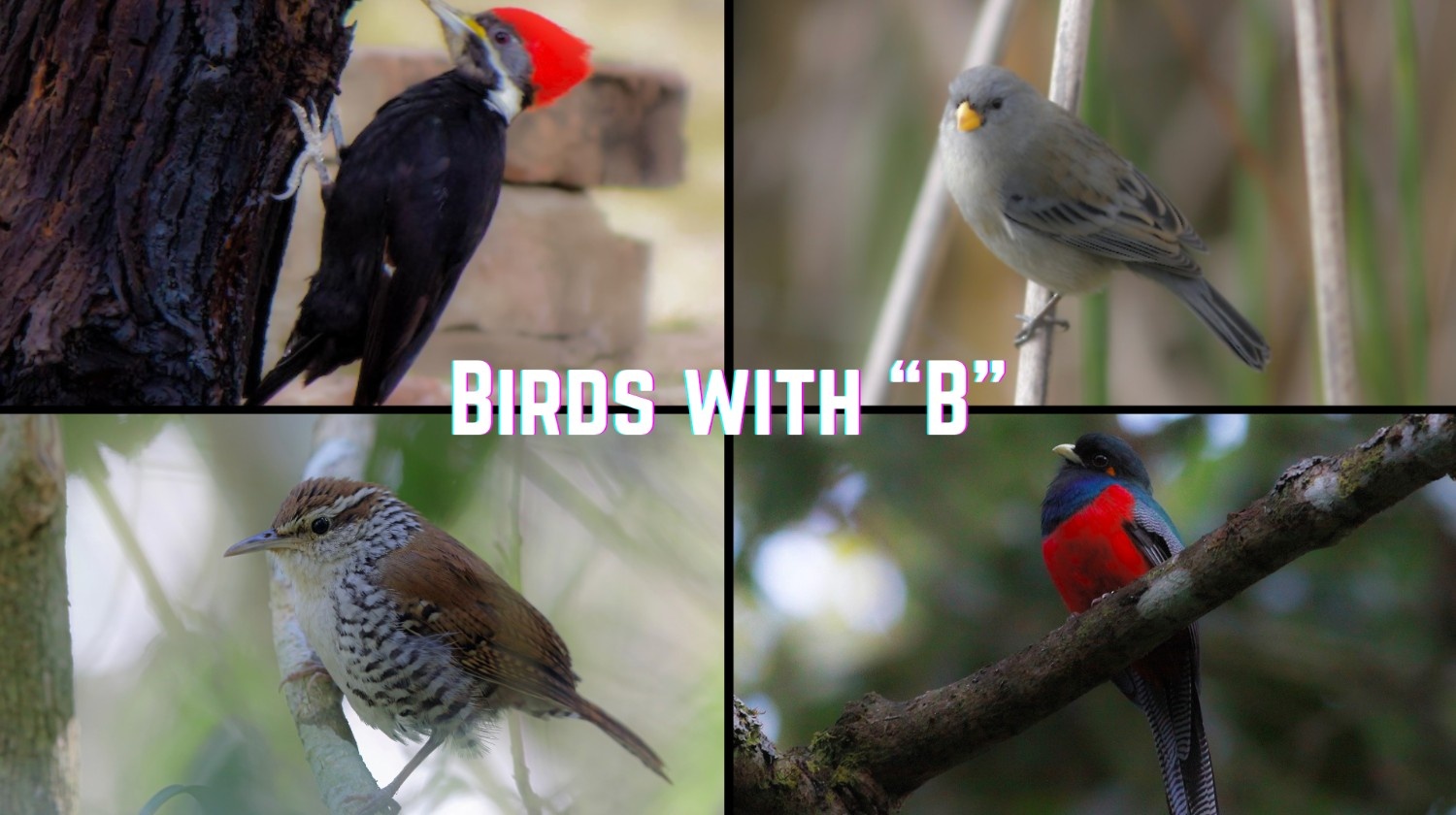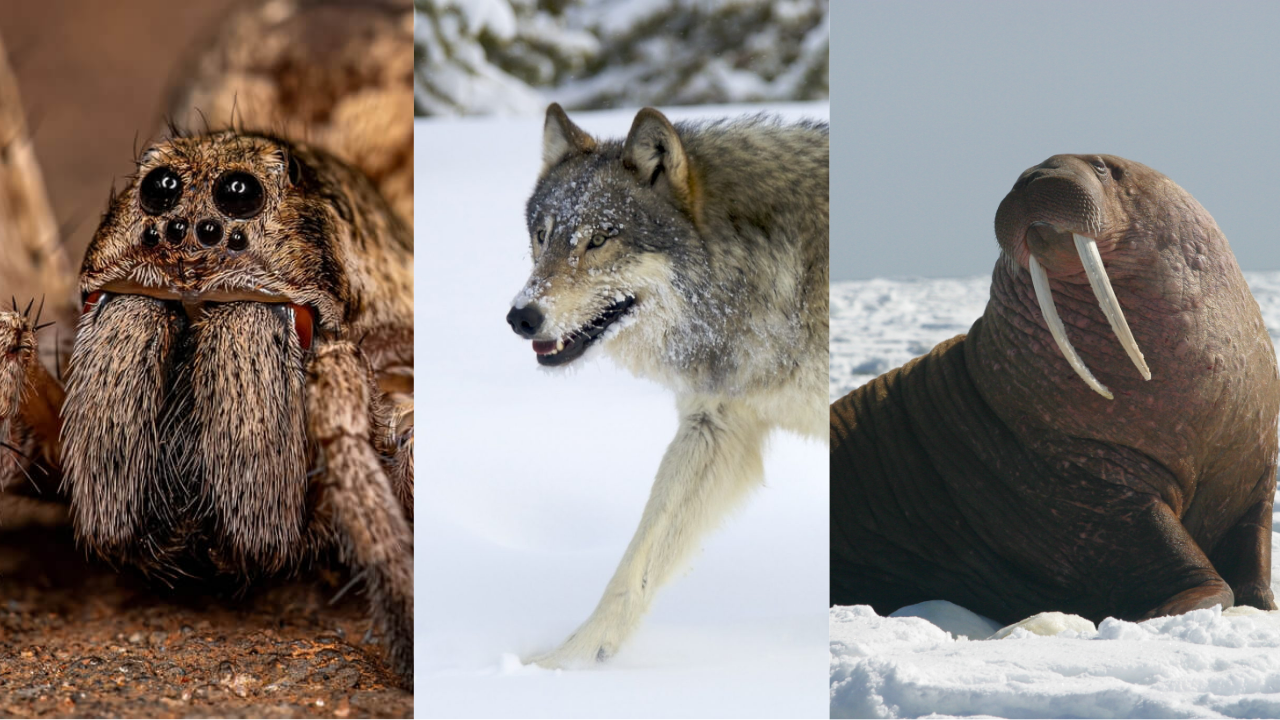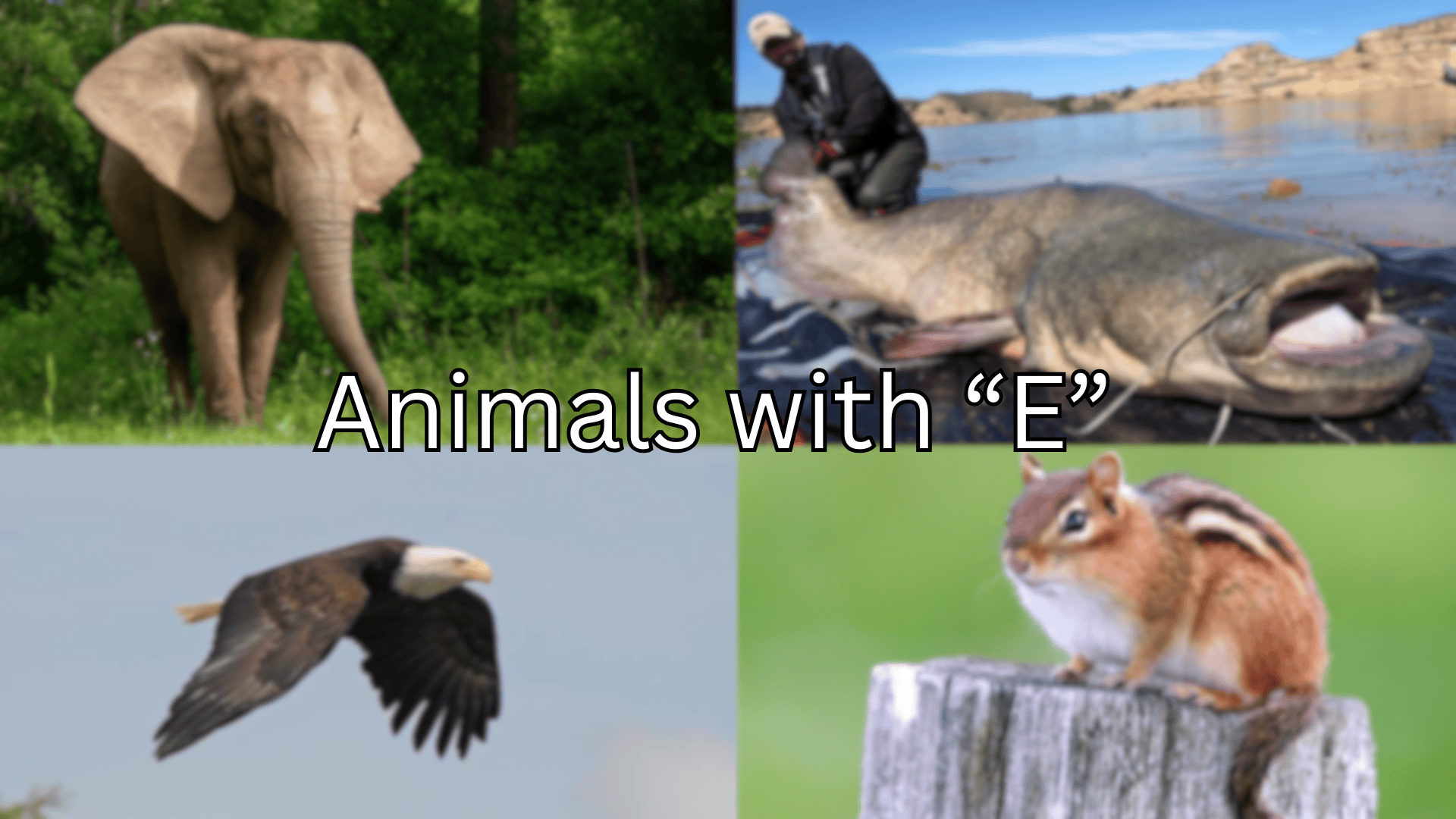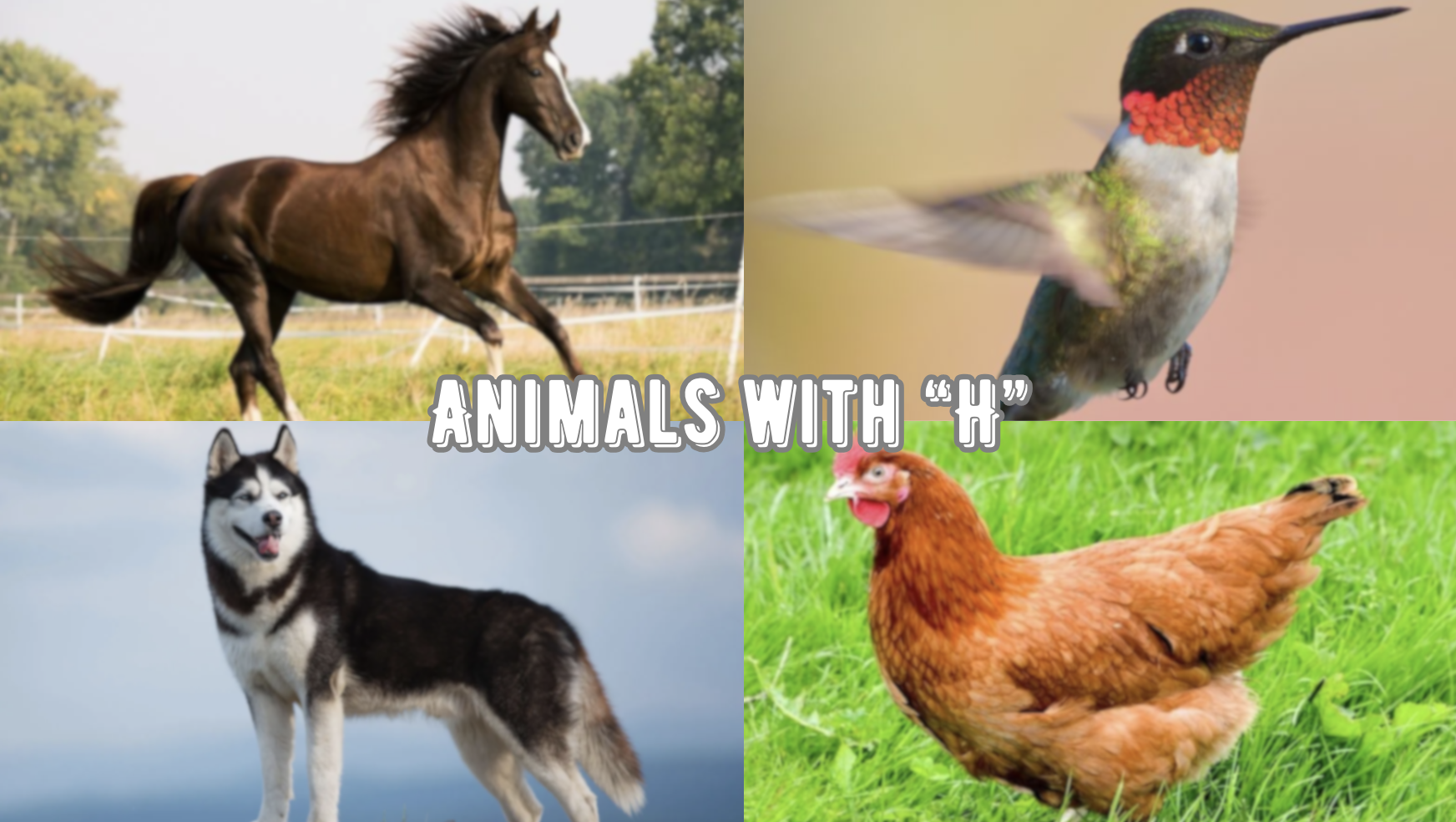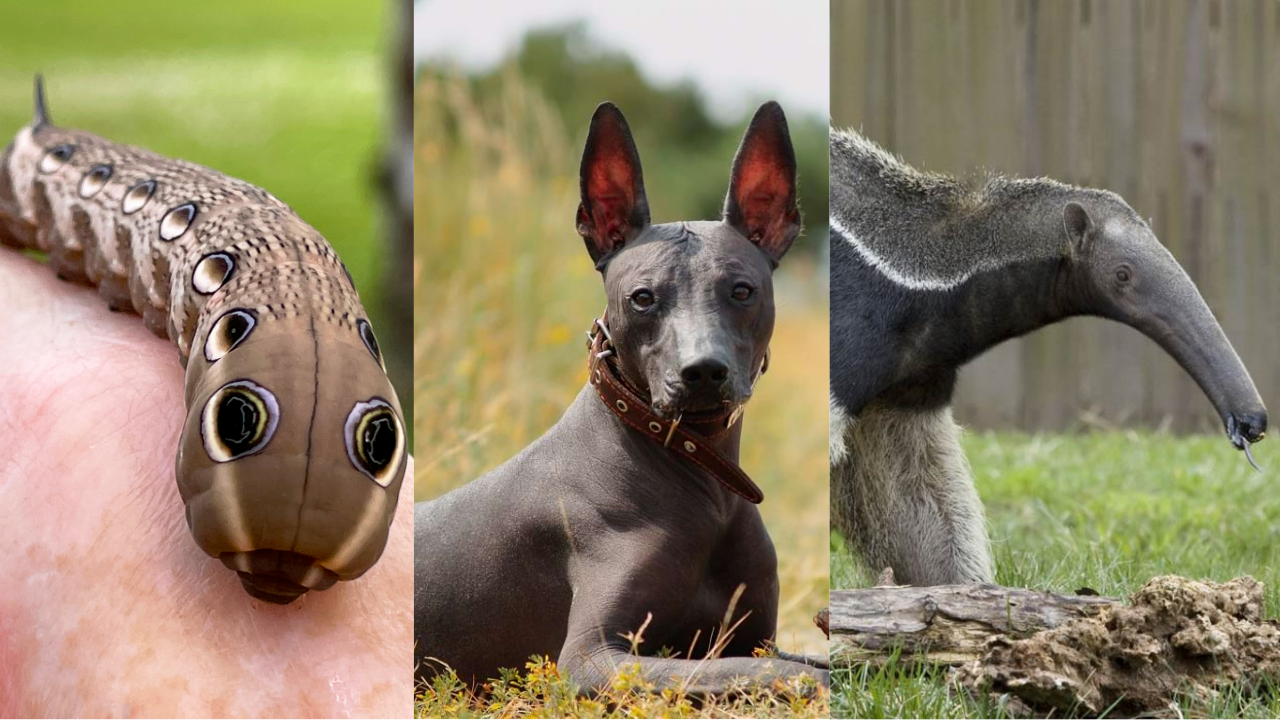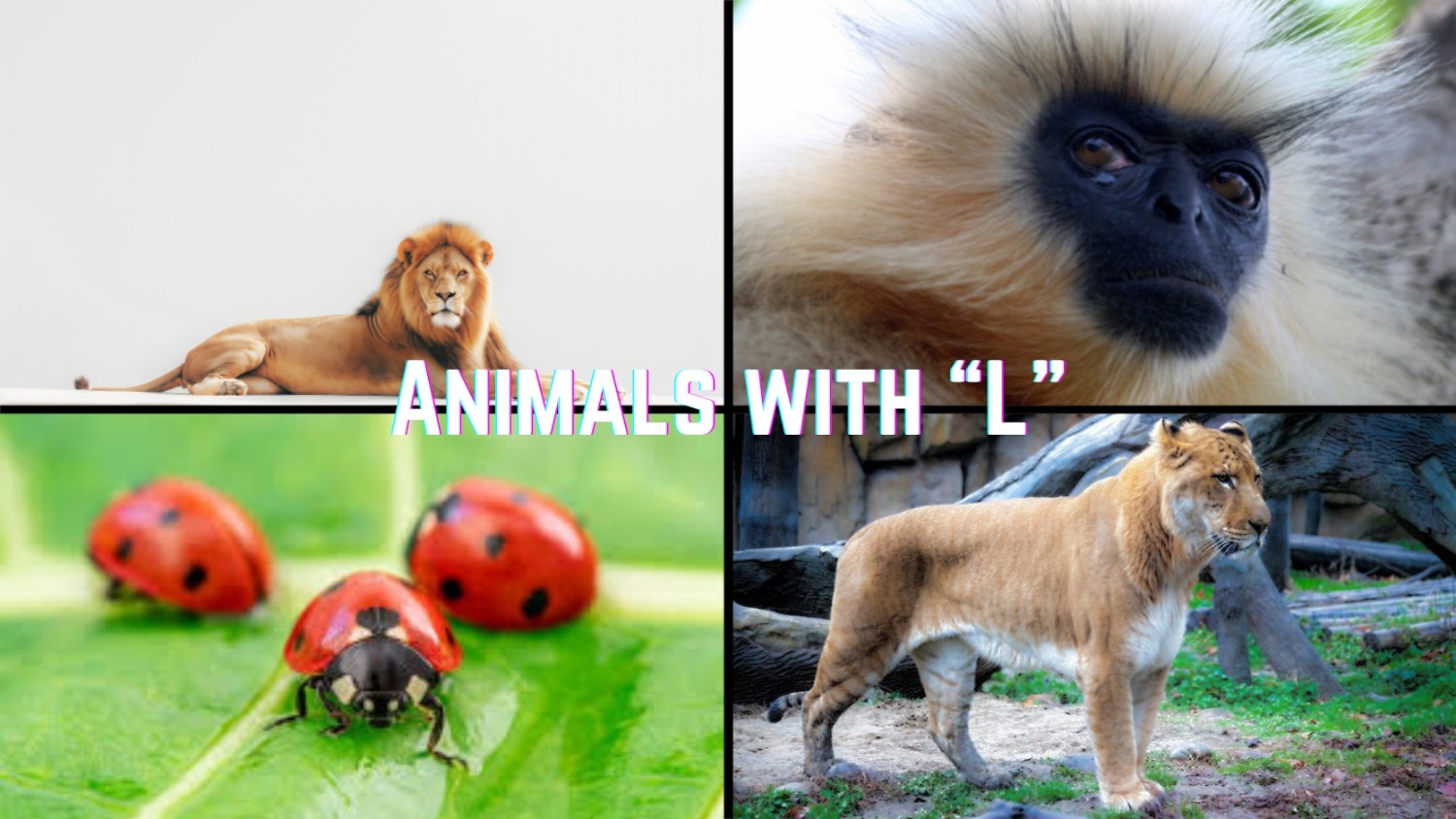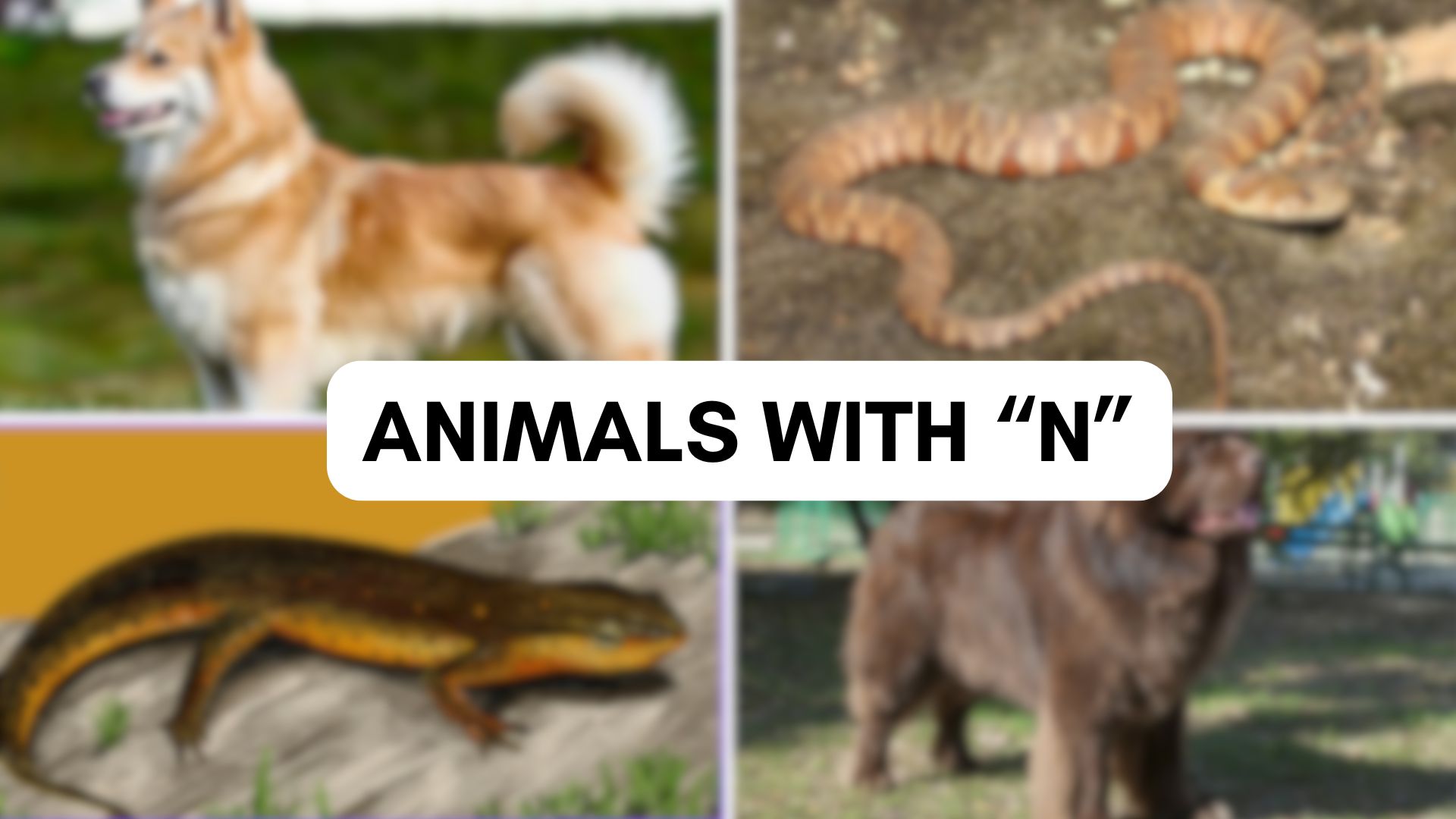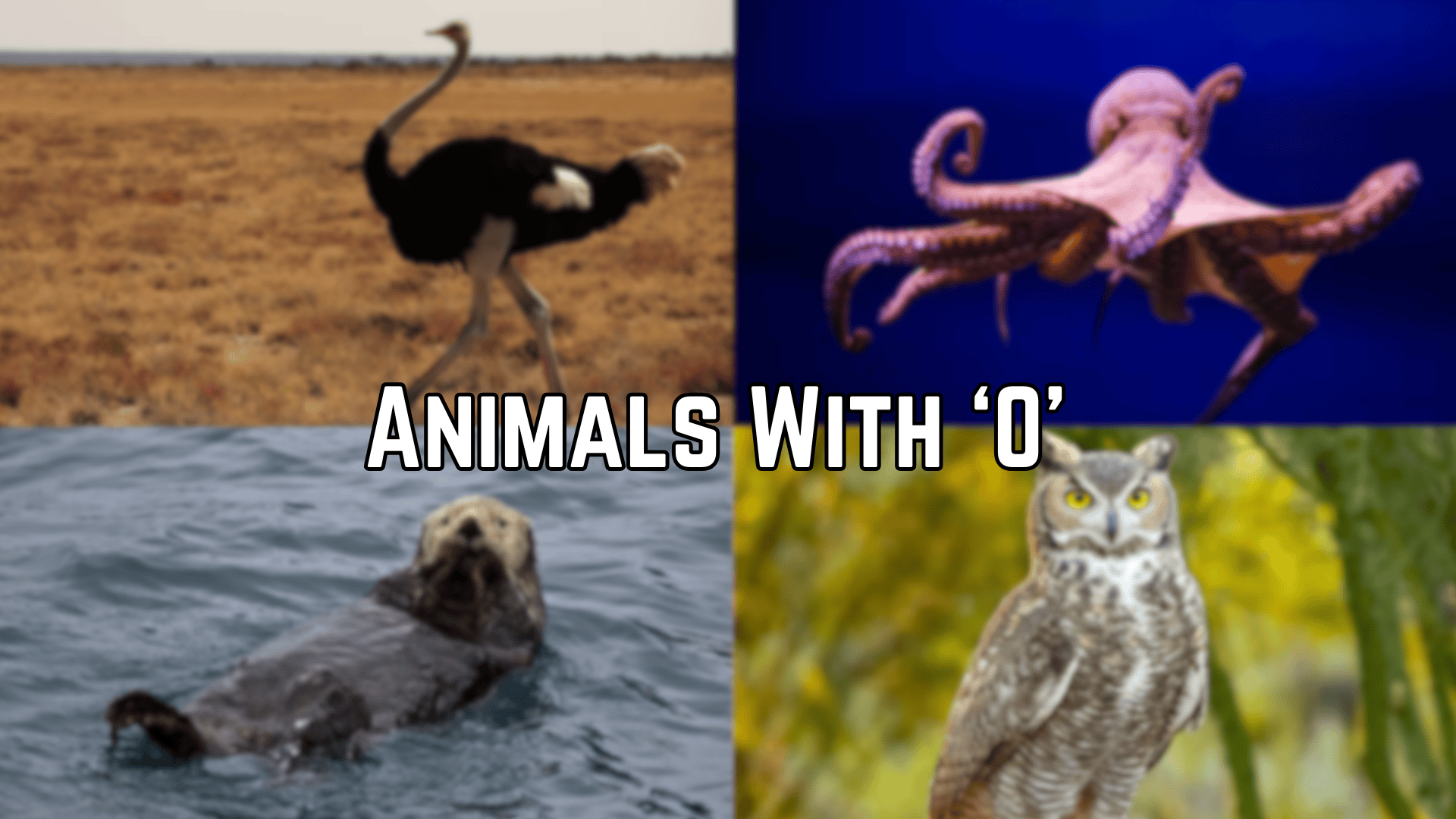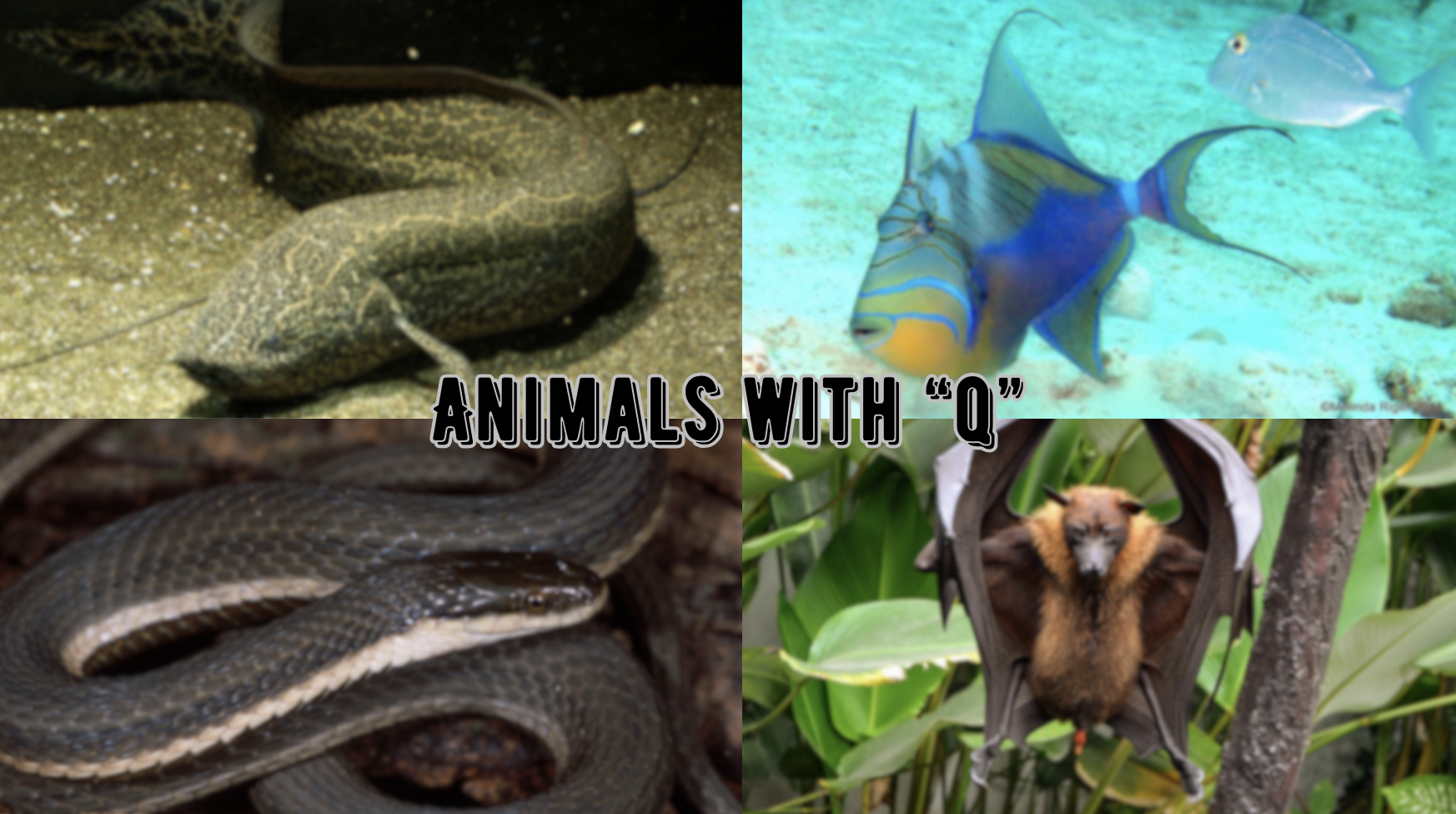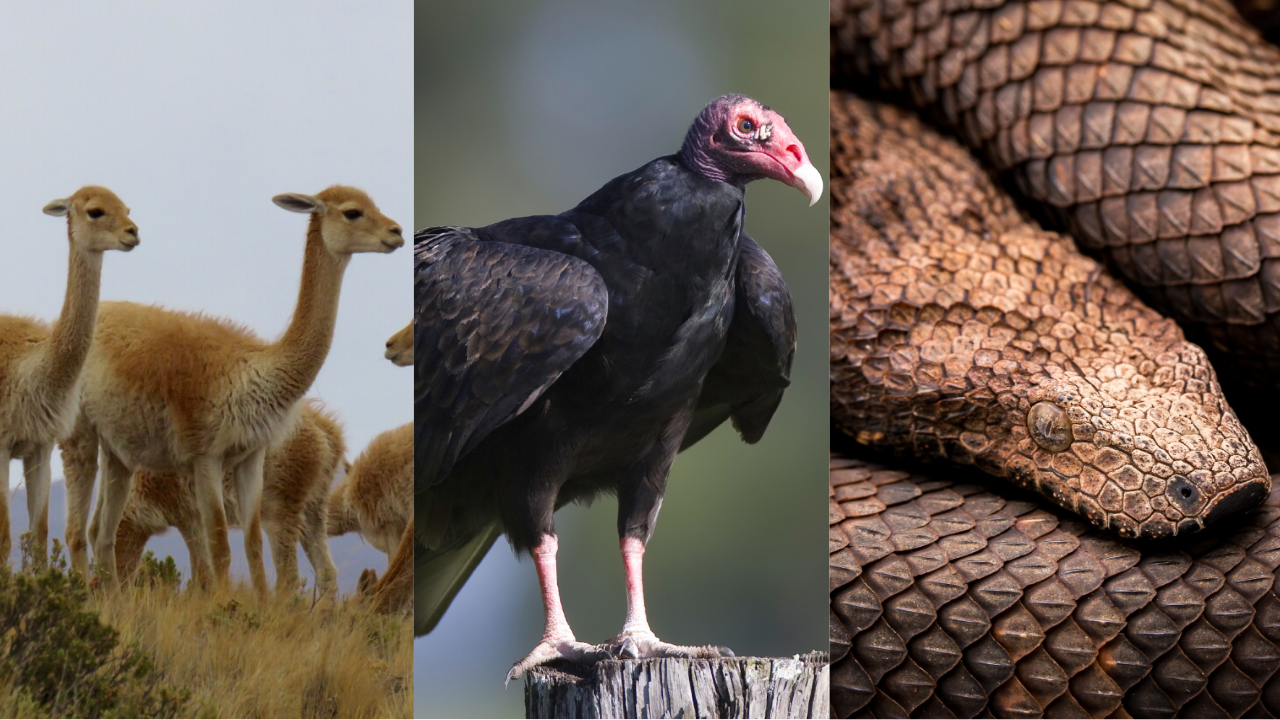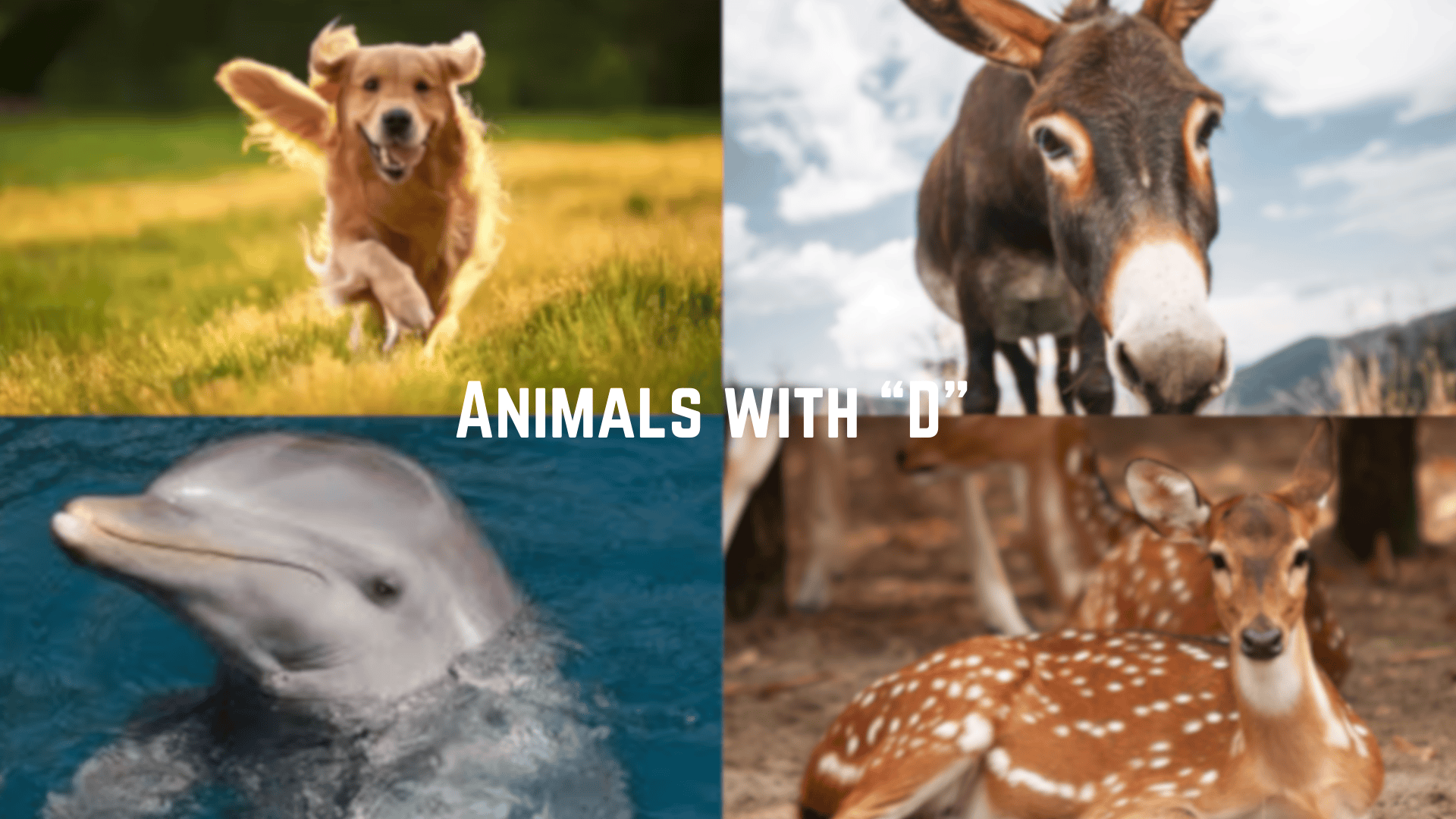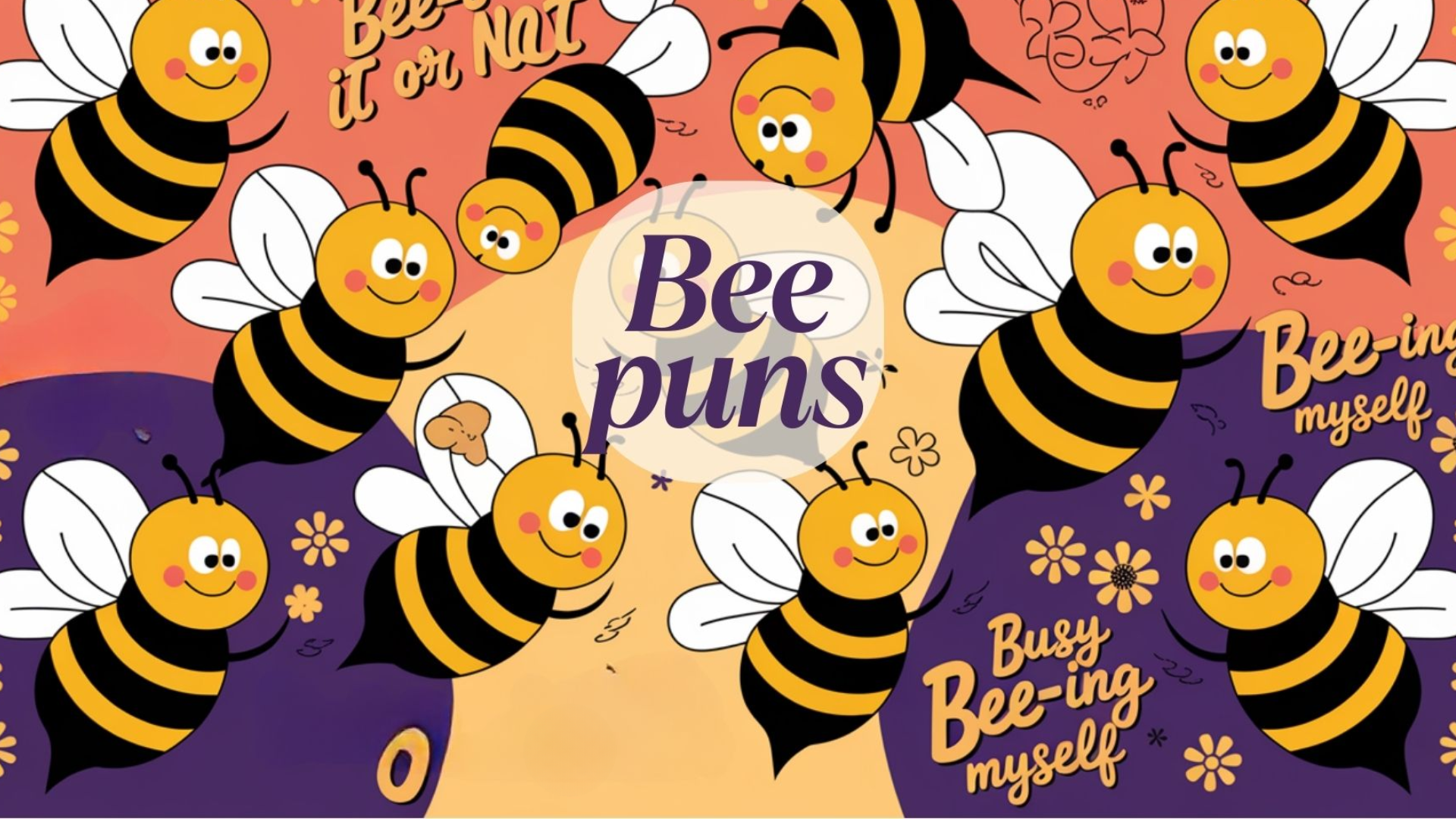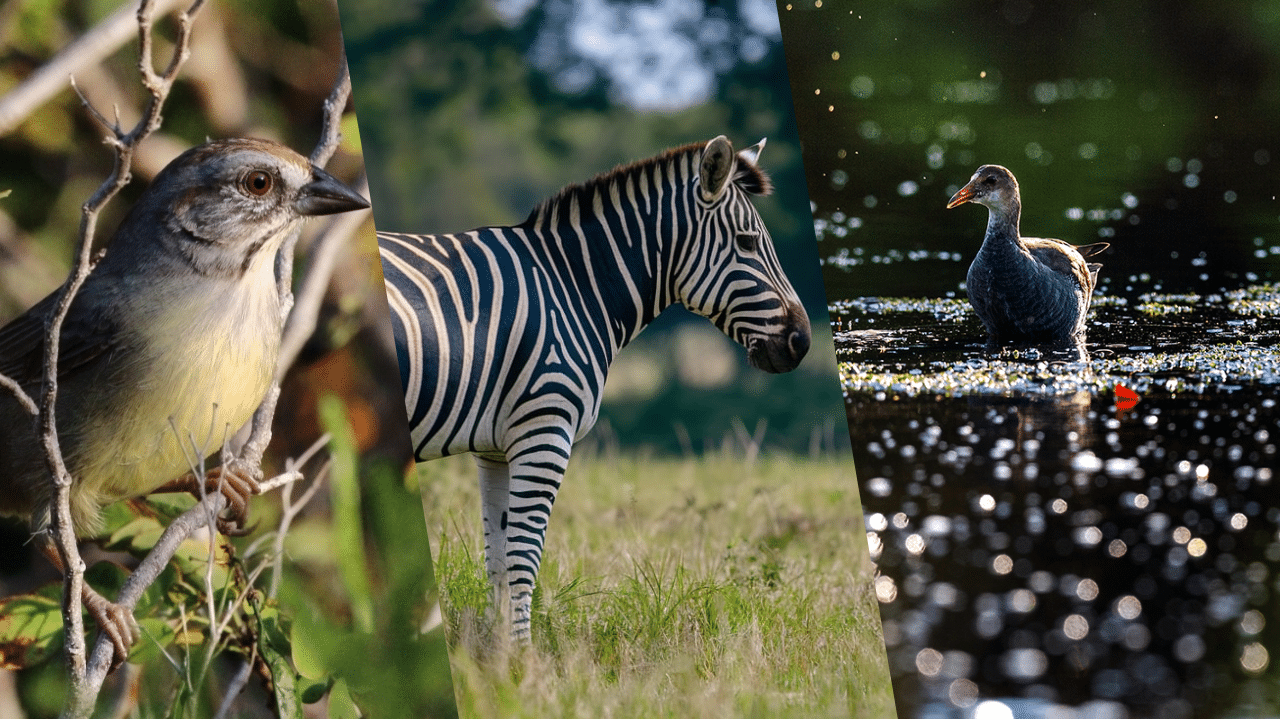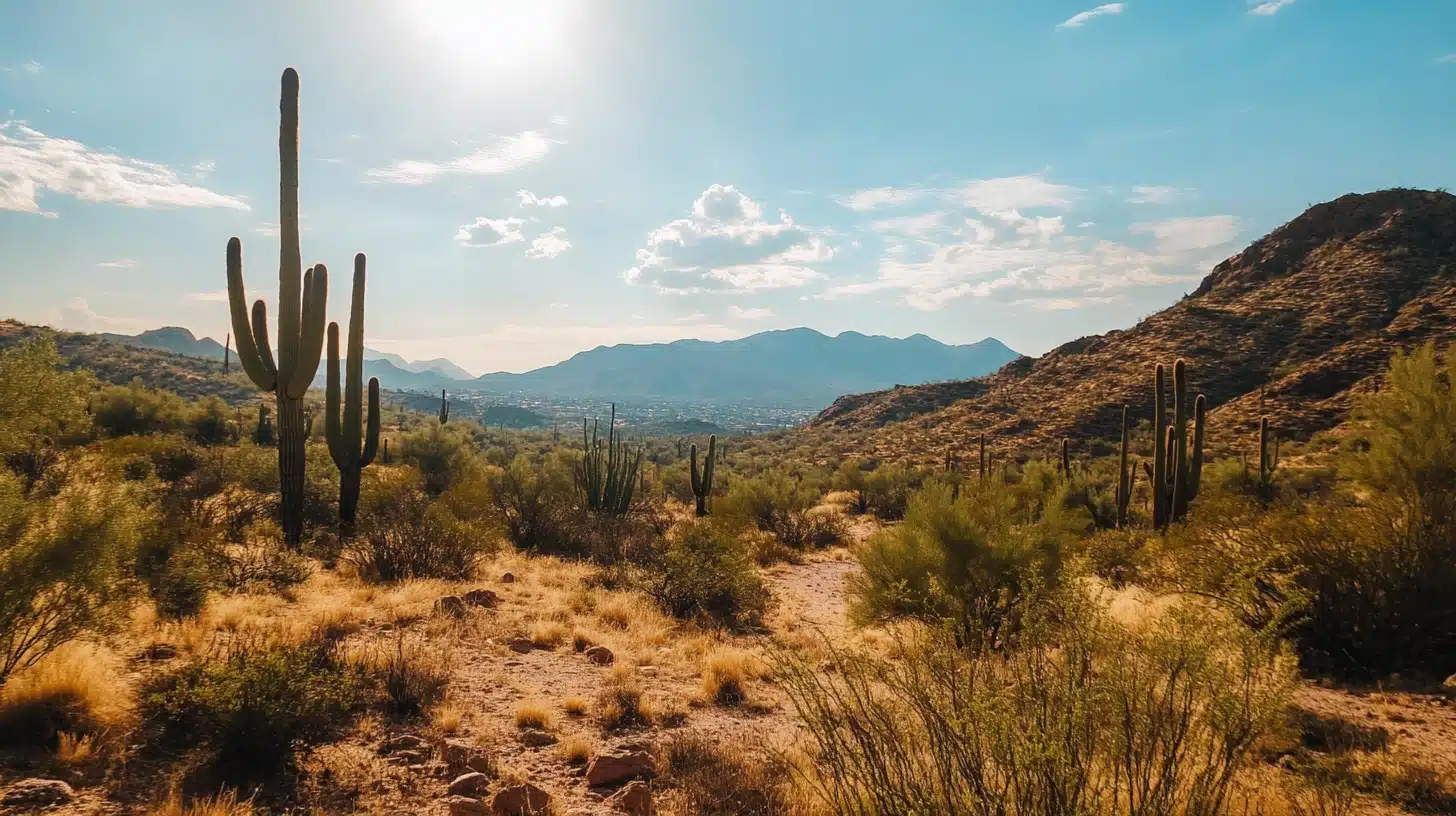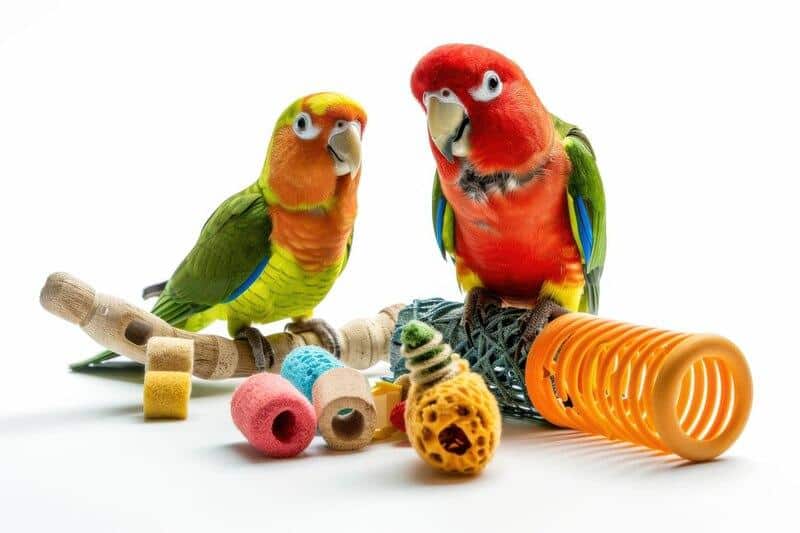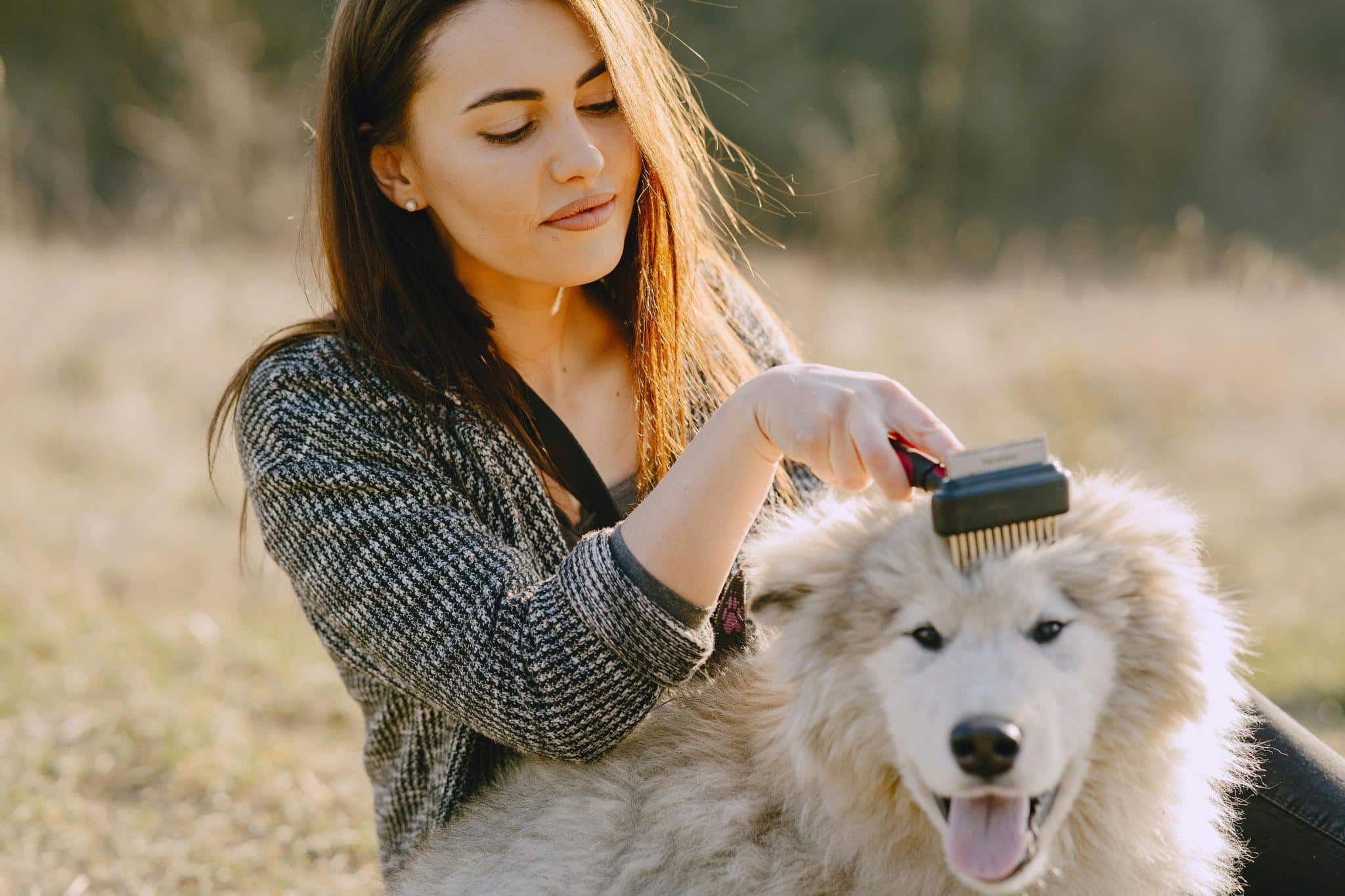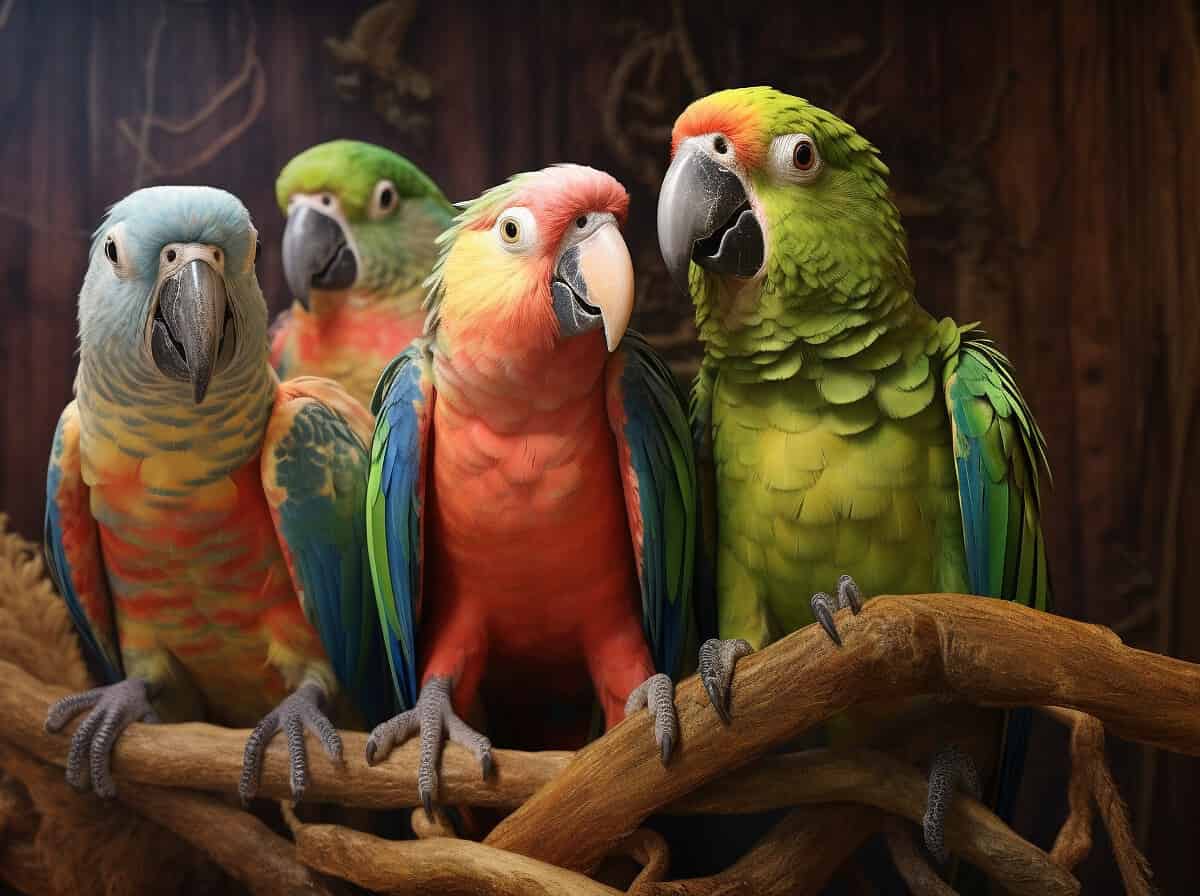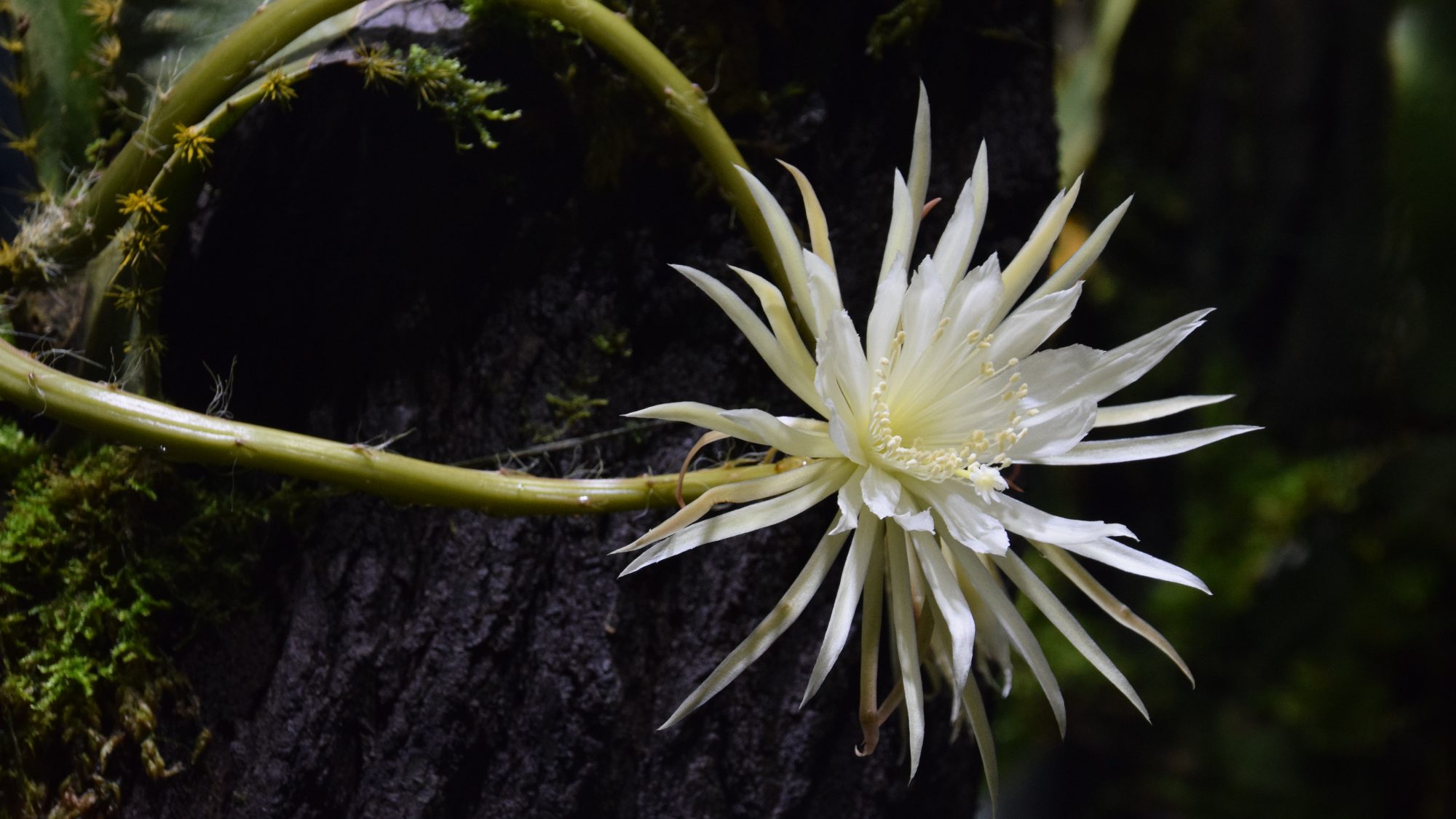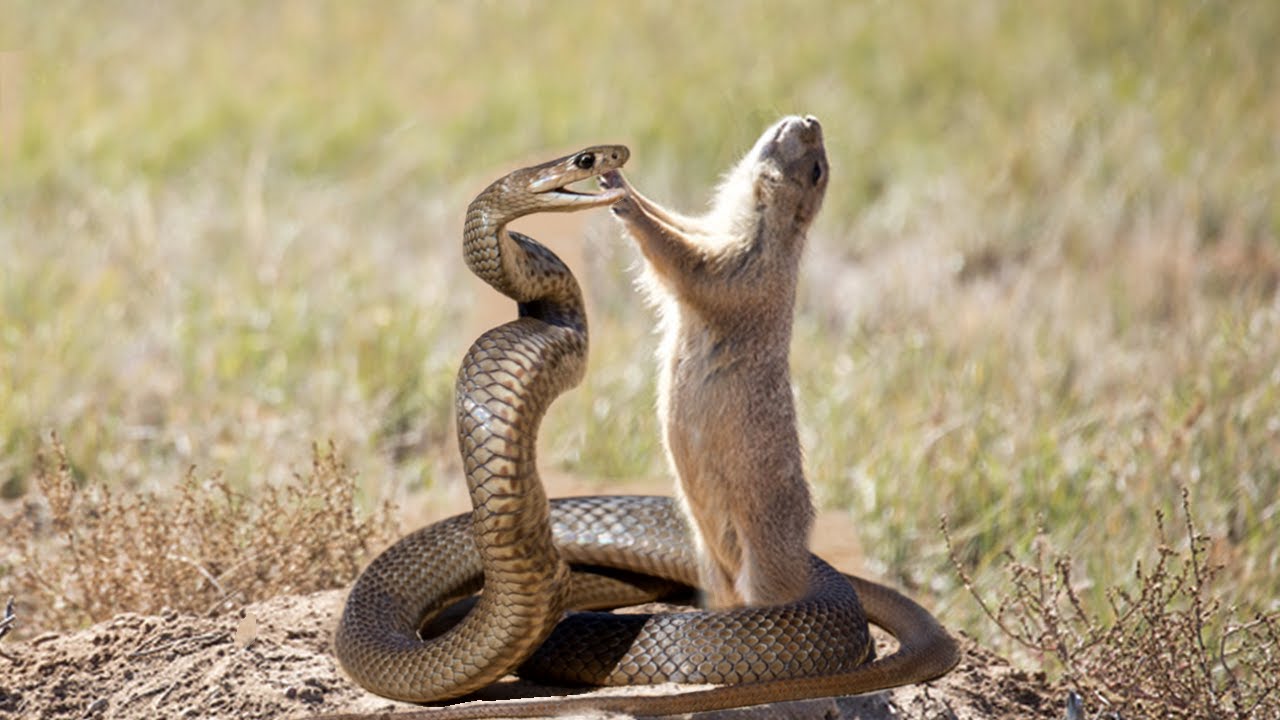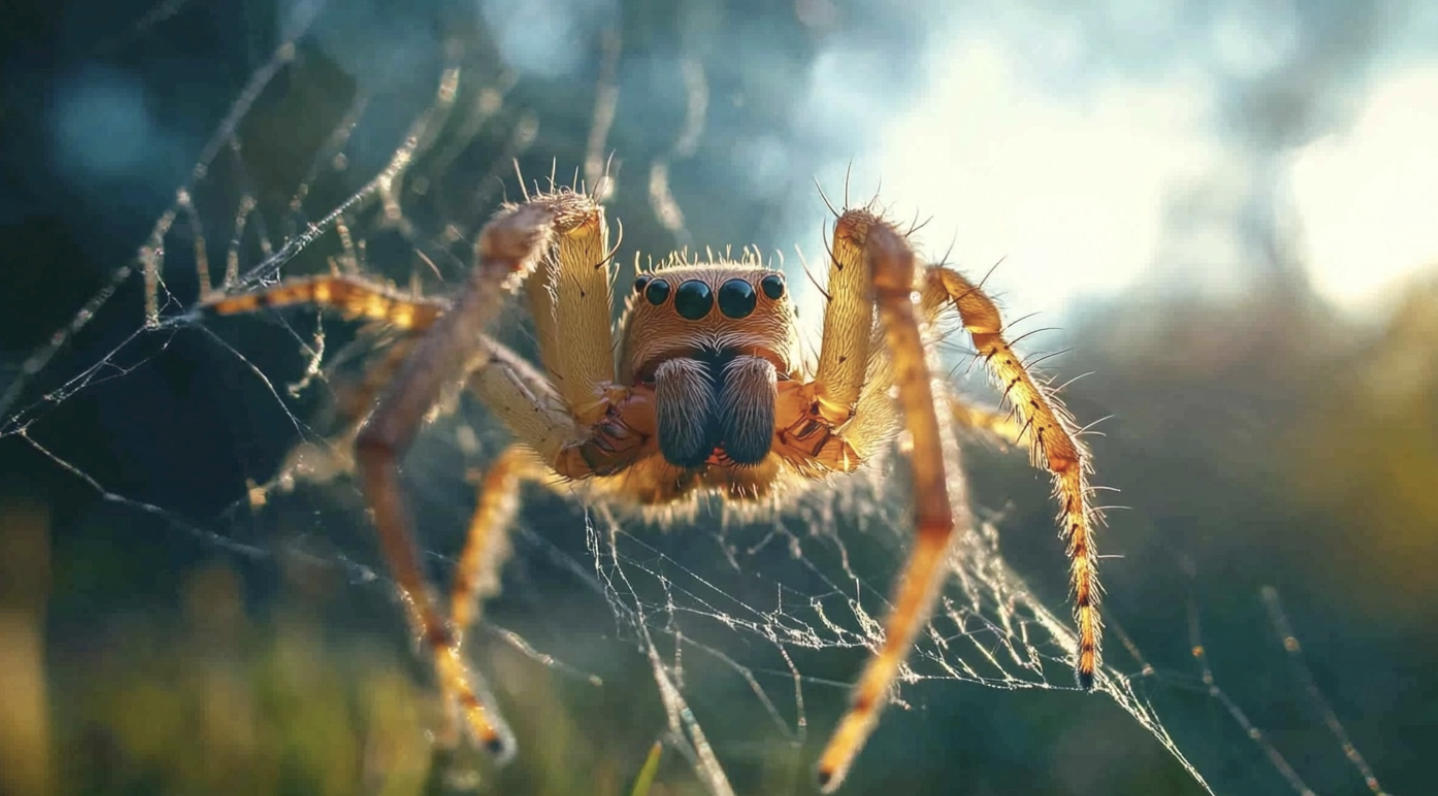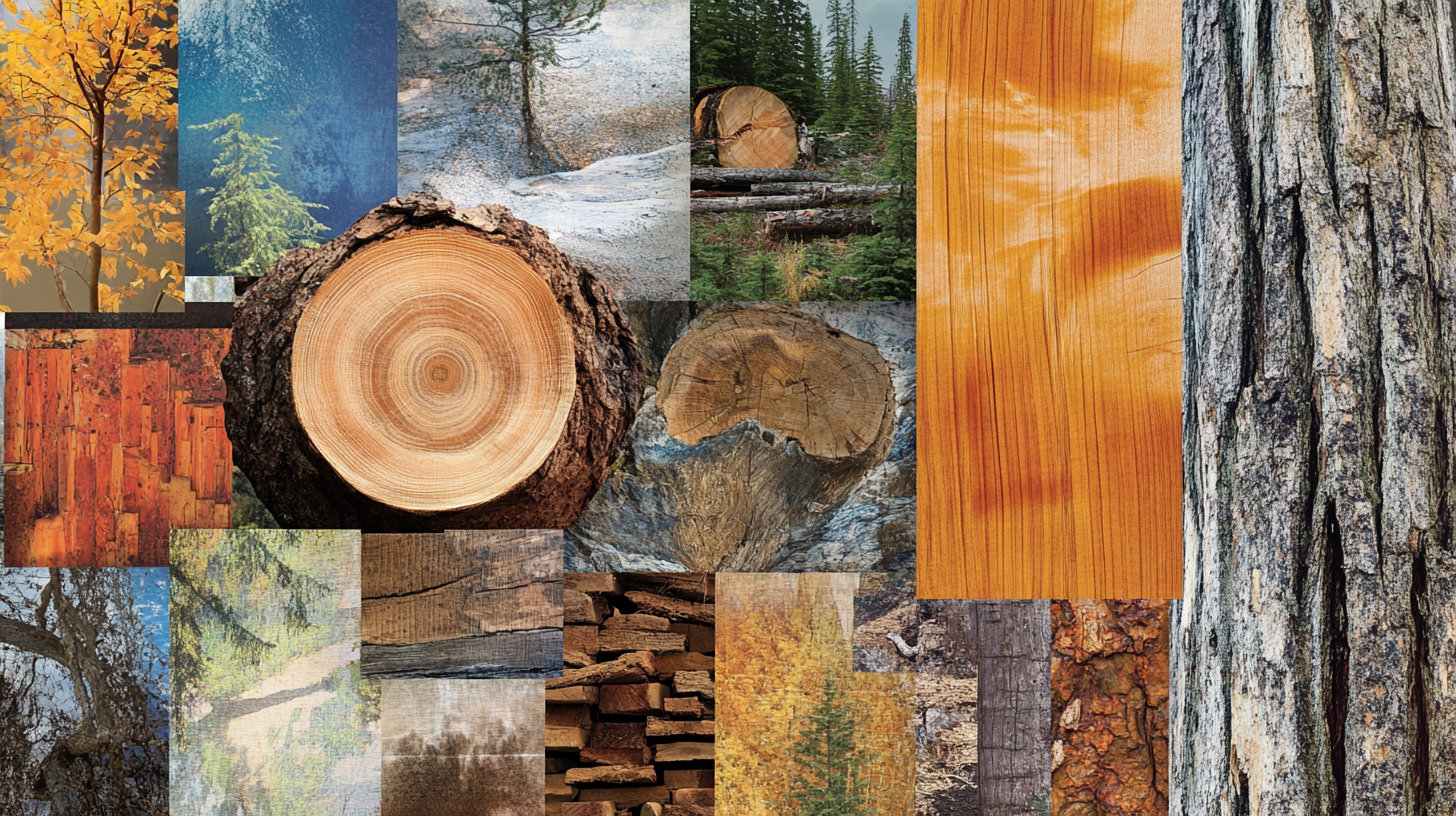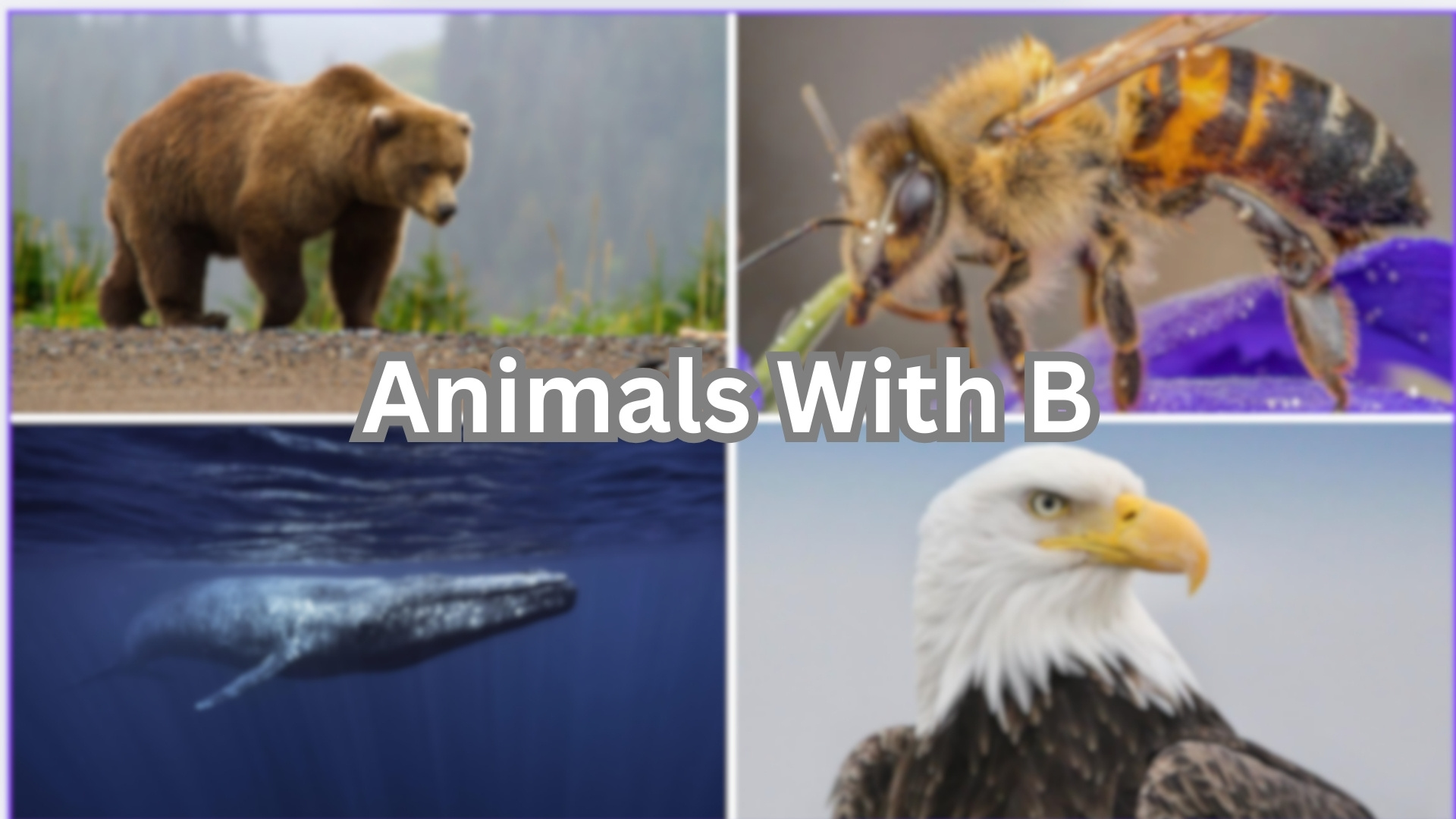
Commonly Found Animals that Start with The Letter “B”
1. Bald Eagle

The bald eagle is a bird of prey known for its striking white head, powerful beak, and keen eyesight. It is the national bird of the United States and is often seen soaring over lakes and rivers in search of fish.
-
Region of Habitat: North America, particularly near large bodies of water
-
Scientific Name: Haliaeetus leucocephalus
-
Feeding Habits: Carnivorous; primarily eats fish but also preys on birds and small mammals
-
What Sound They Make: High-pitched whistles and chirps
Fun Facts
Despite its majestic appearance, the bald eagle’s actual call is surprisingly weak and high-pitched, often replaced by more dramatic sounds in movies. These birds build enormous nests, some measuring over 10 feet wide and weighing more than a ton!
2. Ball Python
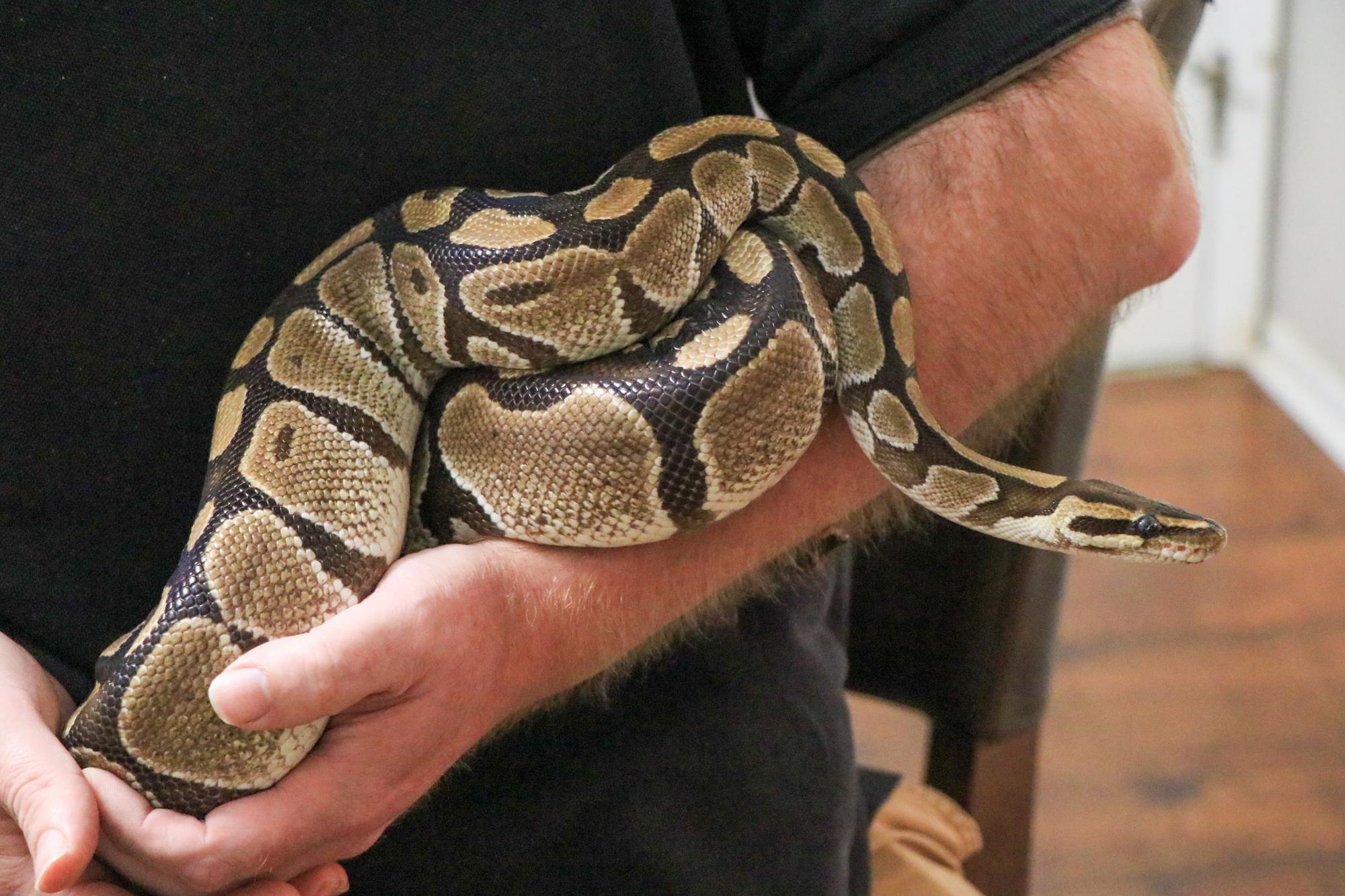
The ball python is a non-venomous snake known for its docile nature and tendency to curl into a tight ball when threatened. It is a popular pet due to its manageable size and calm temperament.
-
Region of Habitat: Sub-Saharan Africa, primarily in grasslands and forests
-
Scientific Name: Python regius
-
Feeding Habits: Carnivorous; feeds on small mammals and birds
-
What Sound They Make: Hissing when threatened
Fun Facts
Ball pythons can live over 30 years in captivity, making them a long-term commitment as pets. Unlike many snakes, they use constriction to suffocate their prey rather than venom.
3. Barn Owl
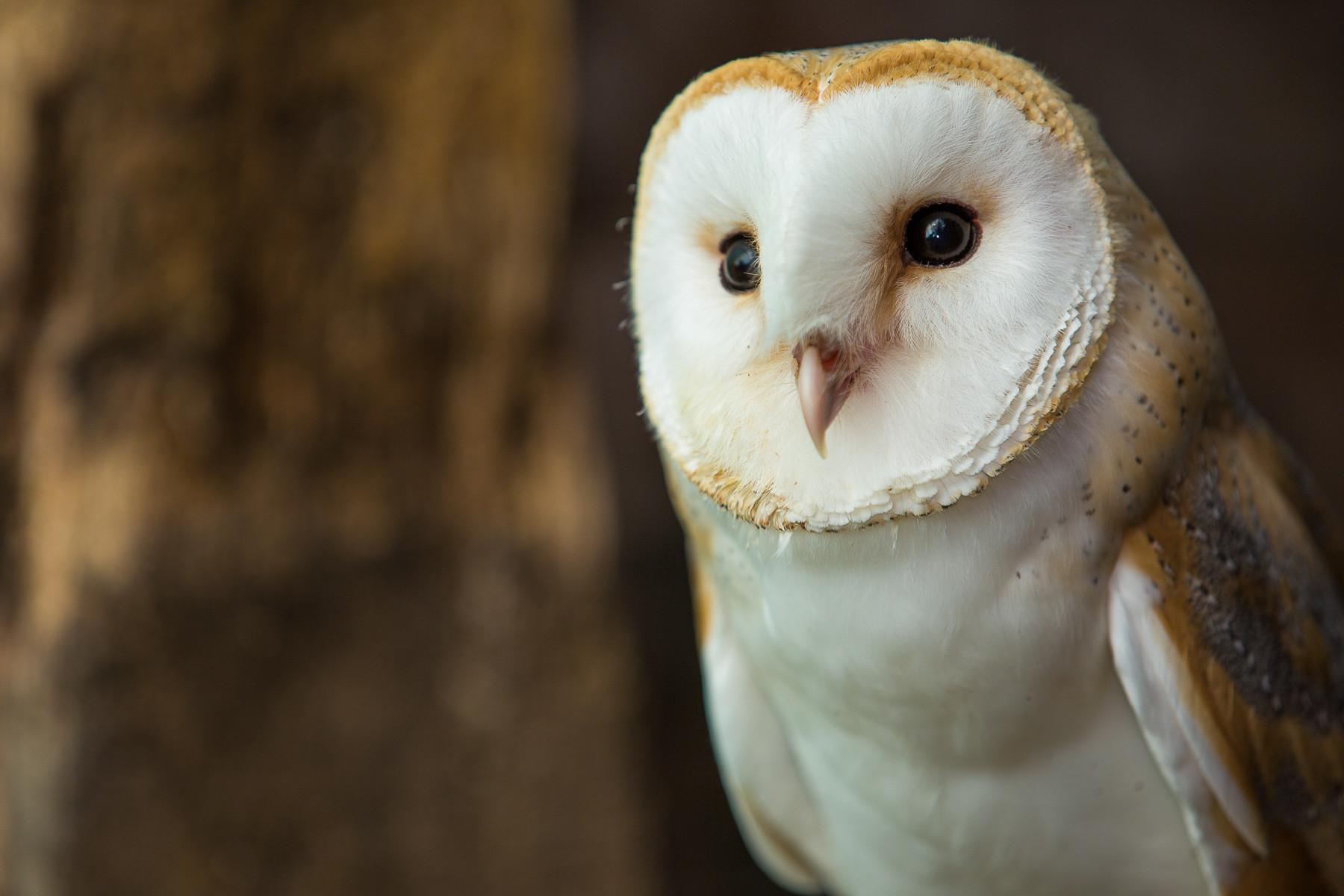
Barn owls are silent hunters with heart-shaped faces and keen nocturnal vision. They are known for their ghostly appearance and ability to detect prey through sound alone.
-
Region of Habitat: Found worldwide except in the polar areas and deserts
-
Scientific Name: Tyto alba
-
Feeding Habits: Carnivorous; primarily preys on small rodents and birds
-
What Sound They Make: Screeching and hissing
Fun Facts
Barn owls can rotate their heads up to 270 degrees to scan their surroundings. Unlike many owls, they do not hoot but instead make eerie screeching sounds.
4. Barracuda
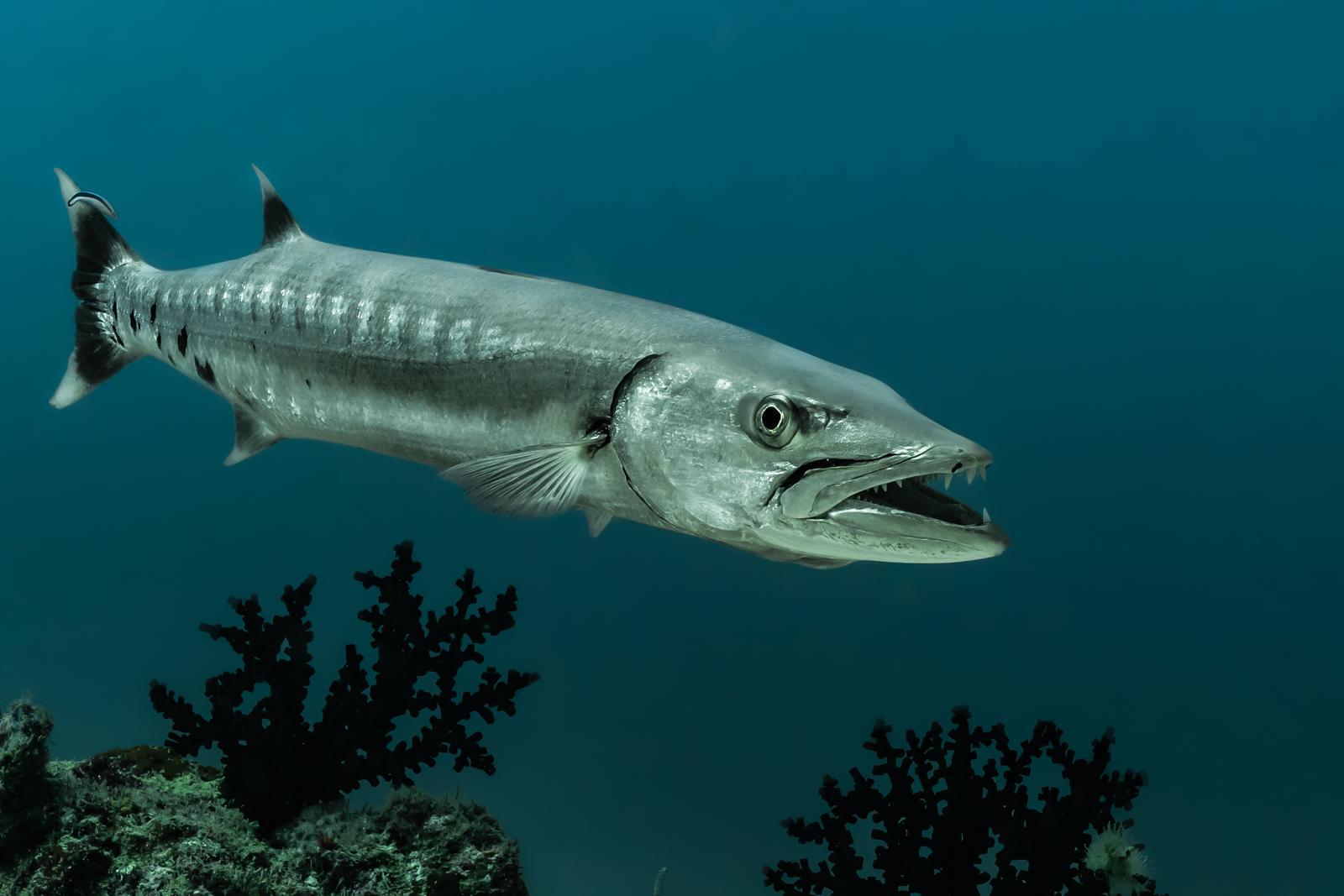
Barracudas are aggressive, fast-swimming predatory fish with sharp teeth and torpedo-shaped bodies. They are known for their sudden attacks and swift movements.
-
Region of Habitat: Warm, tropical and subtropical oceans worldwide
-
Scientific Name: Sphyraena
-
Feeding Habits: Carnivorous; primarily feeds on fish
-
What Sound They Make: Silent, but may produce low grunts
Fun Facts
Barracudas have been known to mistake shiny objects for prey, occasionally biting unsuspecting swimmers. Their streamlined bodies allow them to reach speeds of up to 36 mph when chasing prey.
5. Basset Hound
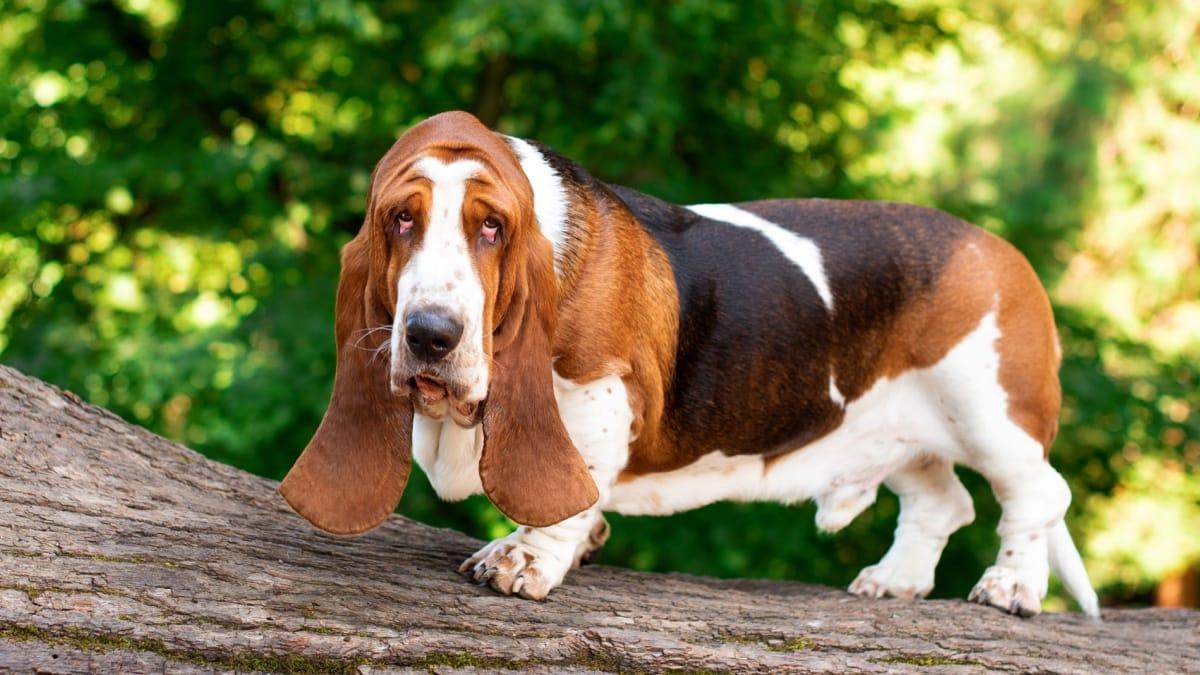
Basset hounds are long-bodied, short-legged dogs known for their exceptional sense of smell and droopy ears. Originally bred for hunting, they are now popular as affectionate pets.
-
Region of Habitat: Domesticated worldwide
-
Scientific Name: Canis lupus familiaris
-
Feeding Habits: Omnivorous; typically eats dog food and meat
-
What Sound They Make: Deep, mournful howls and barks
Fun Facts
Their long ears help trap scents close to their noses, enhancing their tracking ability. Despite their short legs, basset hounds can cover a surprising amount of ground when tracking scents.
6. Bat
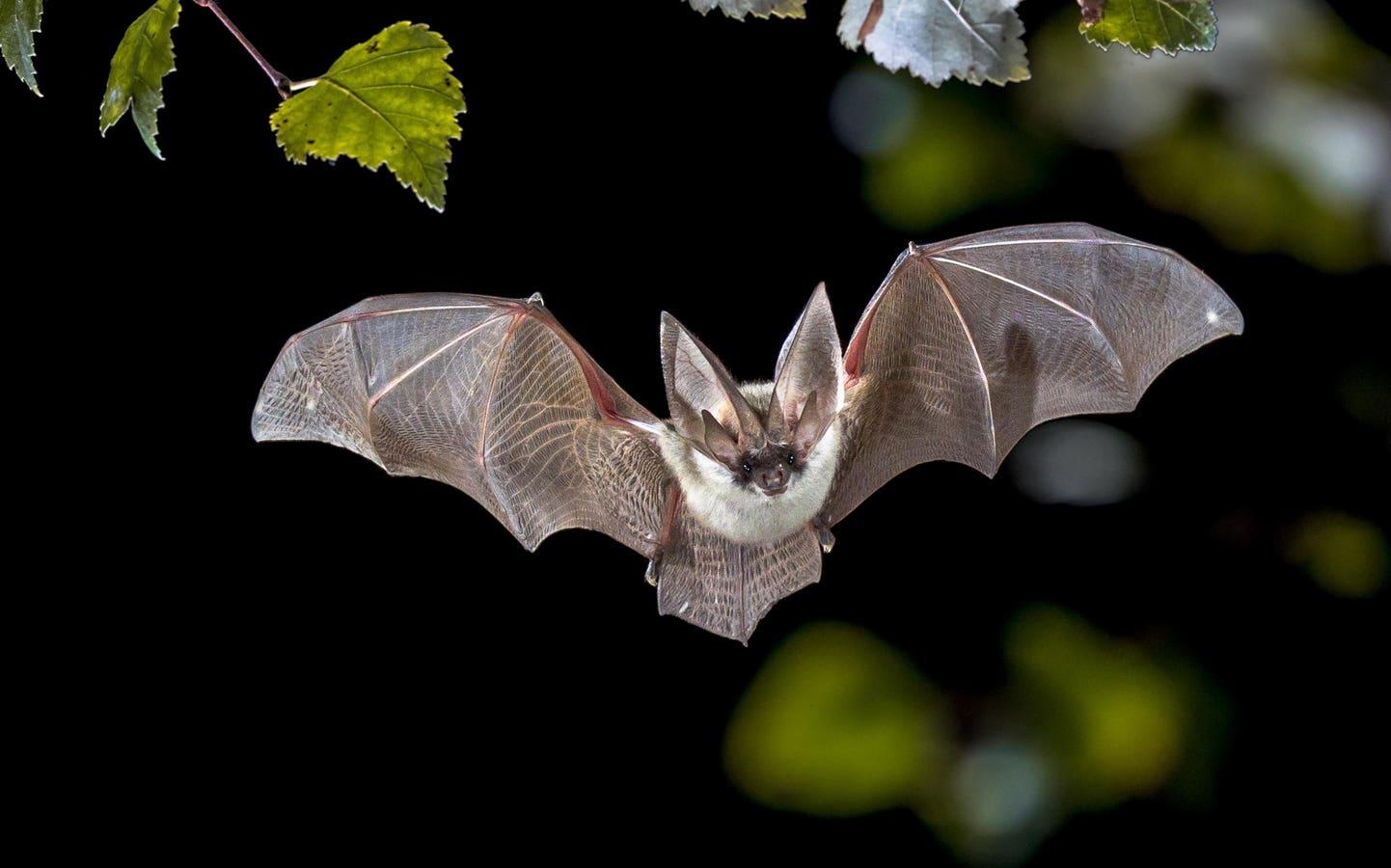
Bats are the only mammals capable of sustained flight, using echolocation to find paths in the dark. They play a crucial role in ecosystems by pollinating plants and controlling insect populations.
-
Region of Habitat: Found worldwide in forests, caves, and urban areas
-
Scientific Name: Chiroptera
-
Feeding Habits: Varies by species; can be insectivorous, frugivorous, or even carnivorous
-
What Sound They Make: High-frequency clicks for echolocation
Fun Facts
Some bats can consume over 1,000 insects in an hour, making them vital for pest control. The smallest bat, the bumblebee bat, is about the size of a large bumblebee!
7. Beagle

Beagles are small hounds known for their excellent sense of smell and friendly personalities. They are commonly used as detection dogs and beloved family pets.
-
Region of Habitat: Domesticated worldwide
-
Scientific Name: Canis lupus familiaris
-
Feeding Habits: Omnivorous; eats dog food, meat, and vegetables
-
What Sound They Make: Howls, barks, and baying
Fun Facts
Beagles have around 220 million scent receptors, making their sense of smell one of the best among dog breeds. They are often used in airports for detecting contraband items.
8. Bear
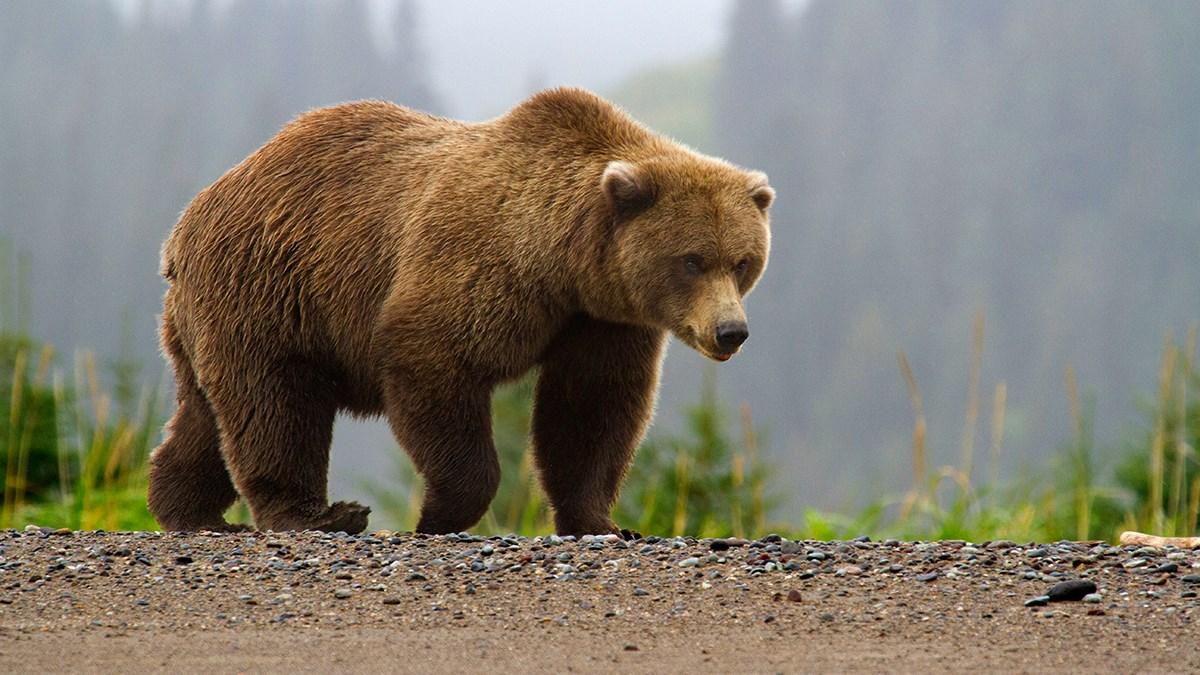
Bears are large mammals known for their strength, intelligence, and adaptability. They inhabit a variety of ecosystems, from forests to tundras.
-
Region of Habitat: North America, Europe, Asia, and South America
-
Scientific Name: Ursidae
-
Feeding Habits: Omnivorous; eats fish, berries, plants, and meat
-
What Sound They Make: Growls, roars, and grunts
Fun Facts
Despite their bulky appearance, some bears can run up to 35 mph. Polar bears have black skin under their white fur to help retain heat in the cold Arctic.
9. Beaver
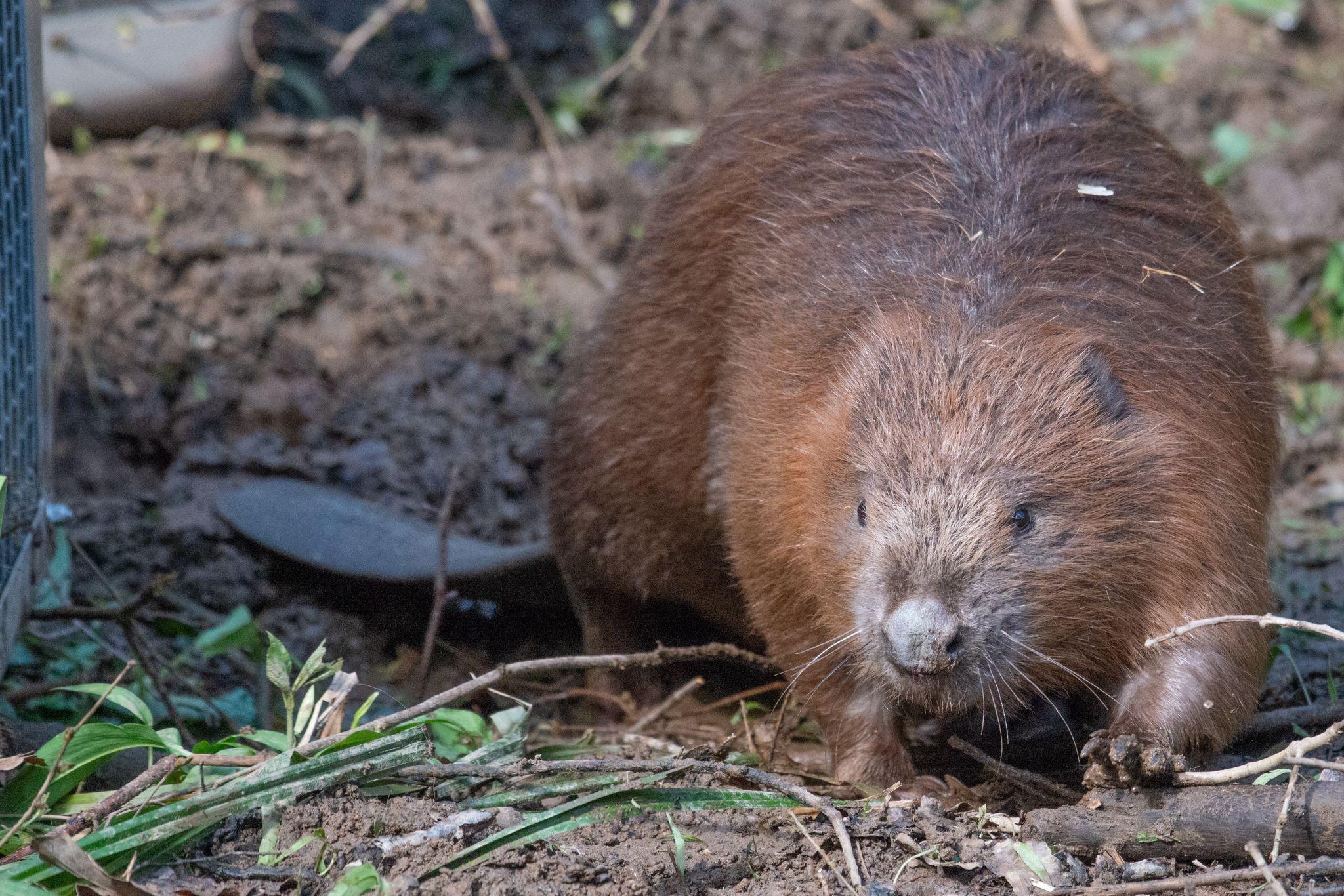
Beavers are expert builders known for creating dams and lodges using wood and mud. Their activities shape entire ecosystems by altering waterways.
-
Region of Habitat: North America, Europe, and Asia
-
Scientific Name: Castor
-
Feeding Habits: Herbivorous; eats bark, leaves, and aquatic plants
-
What Sound They Make: Whining, grunts, and tail slaps on water
Fun Facts
Beavers’ continuously growing teeth allow them to chew through tough wood. Their lodges have underwater entrances to keep predators out.
10. Bee
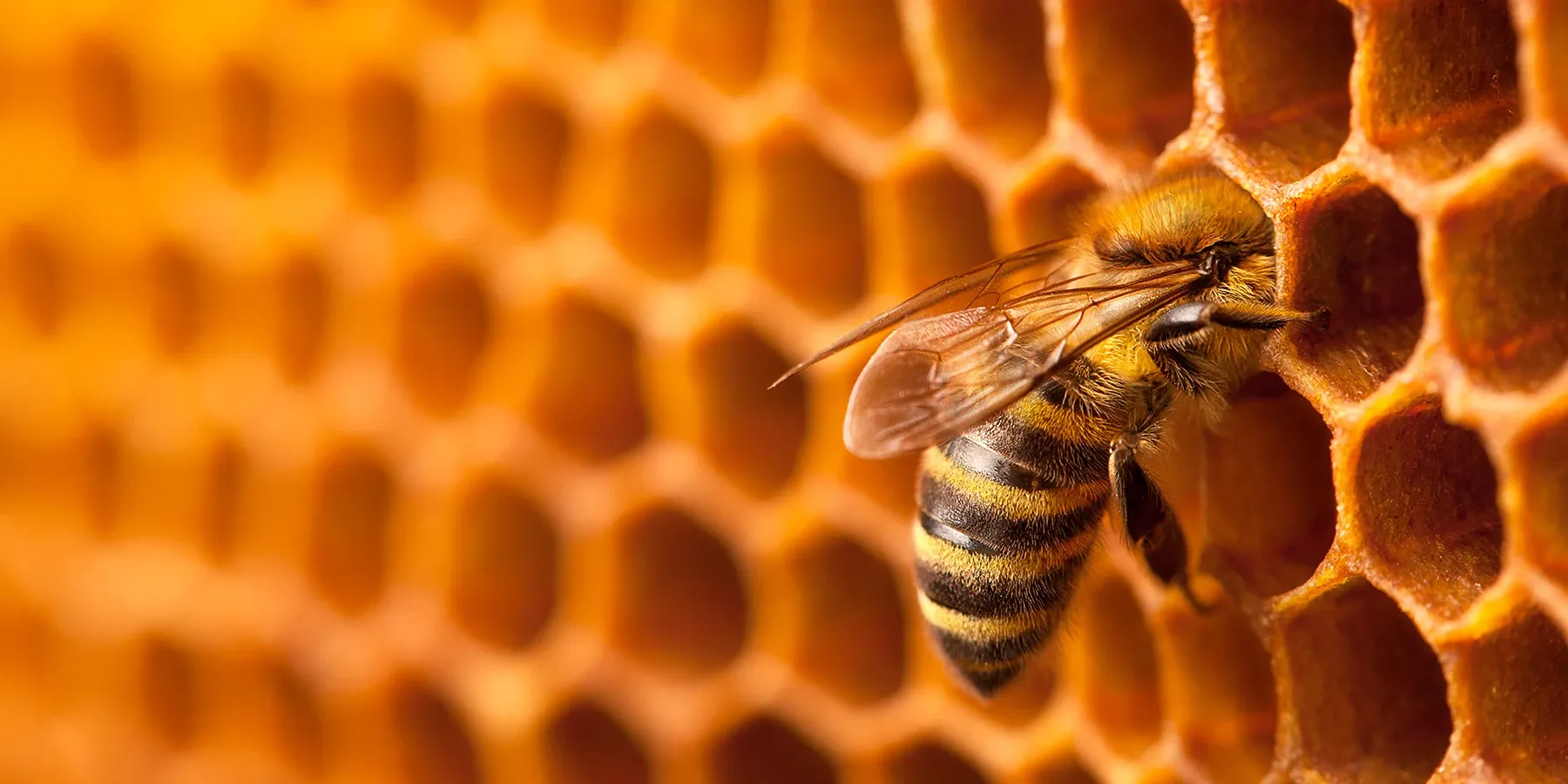
Bees are vital pollinators responsible for maintaining many plant species and producing honey. They communicate through complex dance movements.
-
Region of Habitat: Found worldwide in forests, gardens, and grasslands
-
Scientific Name: Anthophila
-
Feeding Habits: Herbivorous; feeds on nectar and pollen
-
What Sound They Make: Buzzing
Fun Facts
A single bee can visit up to 5,000 flowers in a day. The queen bee can lay over 2,000 eggs per day to sustain the hive.
11. Bengal Tiger
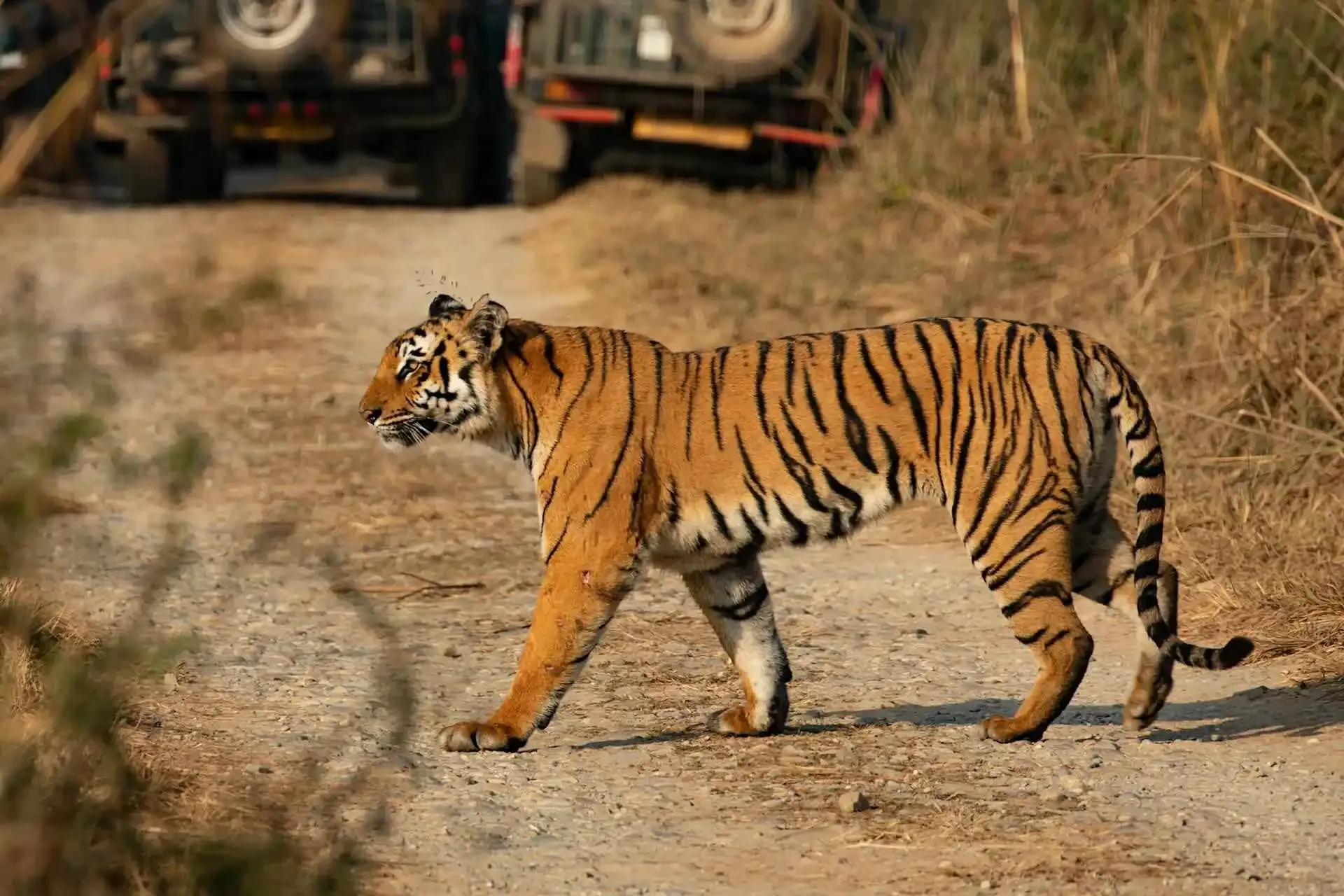
Bengal tigers are one of the largest big cat species, known for their powerful build and striking orange-and-black stripes.
-
Region of Habitat: India, Bangladesh, Nepal, and Bhutan
-
Scientific Name: Panthera tigris tigris
-
Feeding Habits: Carnivorous; hunts deer, wild boar, and buffalo
-
What Sound They Make: Roars, growls, and chuffs
Fun Facts
No two tigers have the same stripe pattern. Bengal tigers are excellent swimmers and often hunt in water.
12. Betta Fish
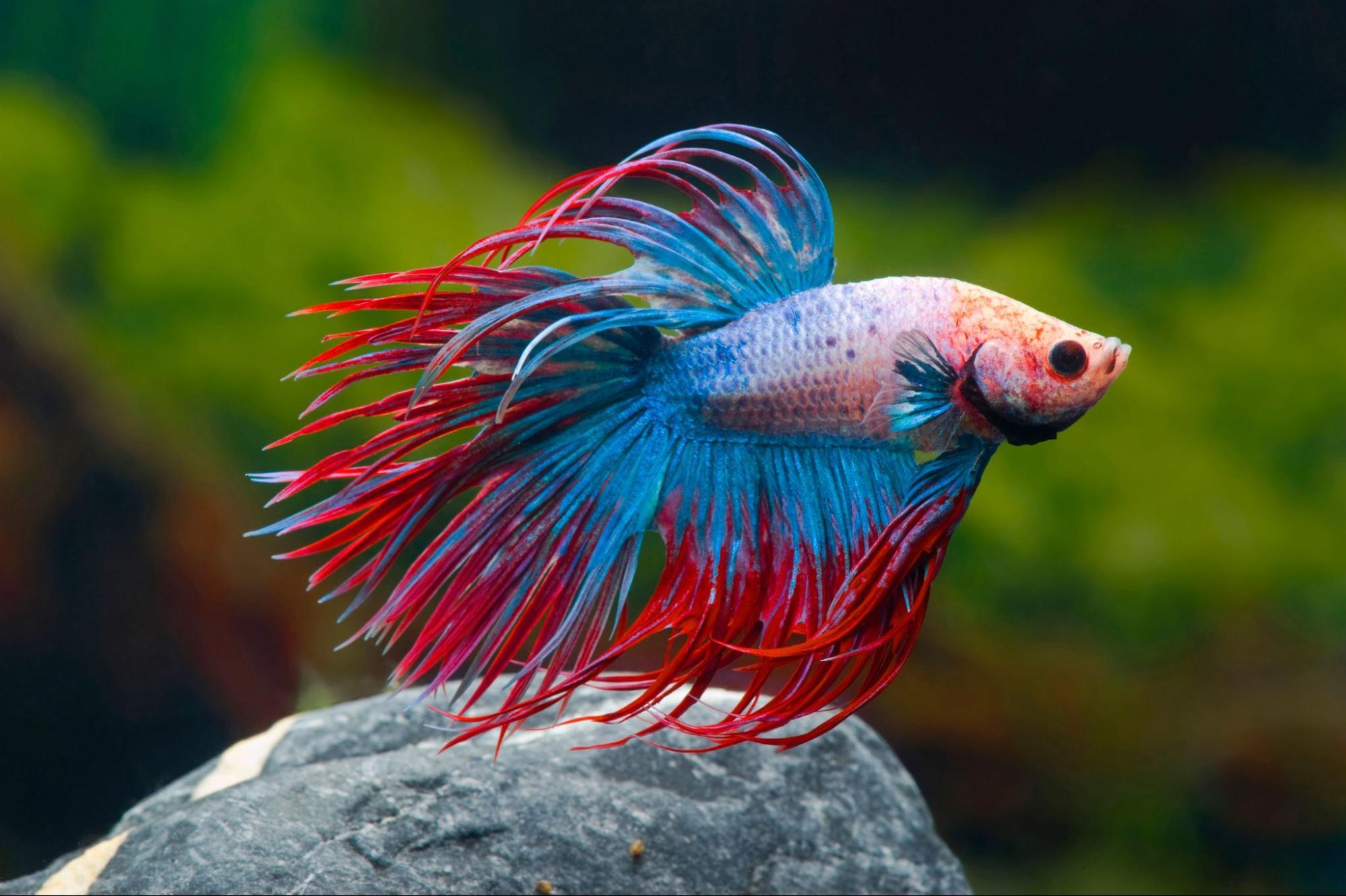
Betta fish are small, brightly colored fish known for their aggressive nature and long-flowing fins.
-
Region of Habitat: Southeast Asia, in shallow waters and rice paddies
-
Scientific Name: Betta splendens
-
Feeding Habits: Carnivorous; eats insects, larvae, and small crustaceans
-
What Sound They Make: Silent
Fun Facts
Male betta fish build bubble nests to protect their eggs. Their vibrant colors become more pronounced when they are happy and healthy.
13. Bison
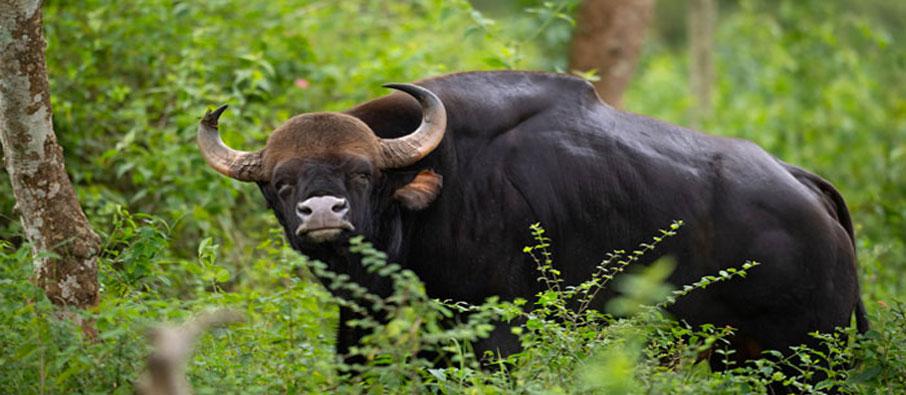
Bison are massive, shaggy-haired herbivores that once roamed North America in vast numbers.
-
Region of Habitat: North America and parts of Europe
-
Scientific Name: Bison bison
-
Feeding Habits: Herbivorous; eats grass and shrubs
-
What Sound They Make: Grunts and bellows
Fun Facts
Bison can reach speeds of up to 35 mph despite their large size. They have been brought back from near extinction through conservation efforts.
14. Blue Whale
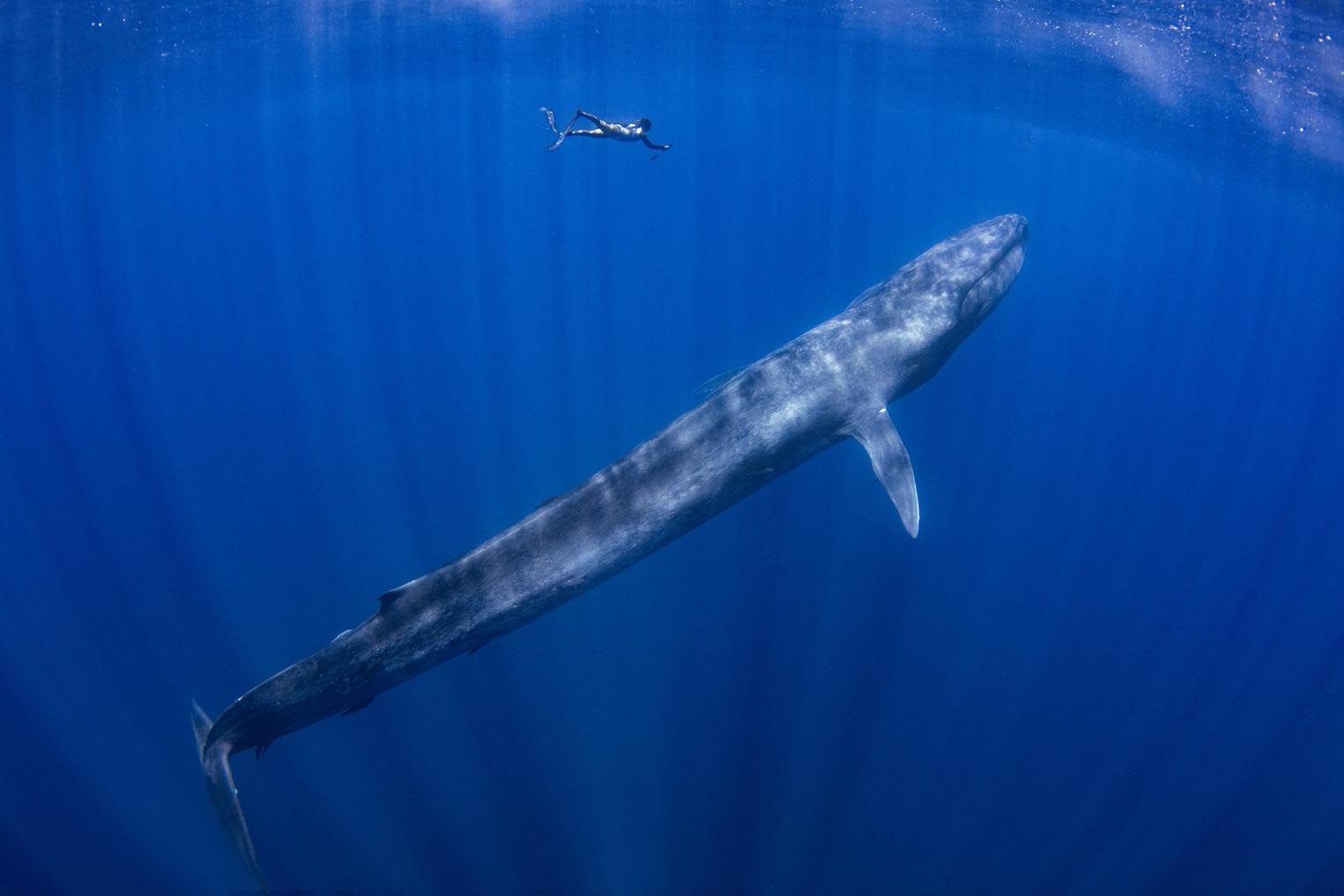
The blue whale is the largest animal on Earth, growing up to 100 feet long and weighing as much as 200 tons. Despite its massive size, it feeds primarily on tiny krill.
-
Region of Habitat: Worldwide in deep oceans
-
Scientific Name: Balaenoptera musculus
-
Feeding Habits: Carnivorous; primarily eats krill using filter-feeding through baleen plates
-
What Sound They Make: Deep, low-frequency calls and moans
Fun Facts
A blue whale’s heart can weigh as much as a small car, and its heartbeat can be detected from two miles away. Their calls are among the loudest sounds made by any animal, helping them communicate across vast ocean distances.
15. Bottlenose Dolphin

Bottlenose dolphins are intelligent marine mammals known for their playful behavior and ability to communicate using clicks and whistles. They are highly social and often travel in pods.
-
Region of Habitat: Warm and temperate oceans worldwide, including coastal areas
-
Scientific Name: Tursiops truncatus
-
Feeding Habits: Carnivorous; eats fish, squid, and crustaceans
-
What Sound They Make: Clicks, whistles, and echolocation clicks
Fun Facts
Bottlenose dolphins have been observed using tools, such as sponges, to protect their snouts while foraging. They can recognize themselves in mirrors, a sign of advanced intelligence rarely seen in animals.
Some More Animals that Start with The Letter “B”
16. Babirusa
17. Baboon
18. Bactrian Camel
19. Badger
20. Bagle – Basset Hound Mix
21. Bagworm Moth
22. Bagworm Moth Caterpillar
23. Baird’s Rat Snake
24. Baleen Whale
25. Balinese
26. Balkan Lynx
27. Bamboo Rat
28. Bamboo Shark
29. Bamboo Worms
30. Banana Ball Python
31. Banana Cinnamon Ball Python
32. Banana Eel
33. Banana Spider
34. Banded Krait
35. Banded Palm Civet
36. Banded Water Snake
37. Bandicoot
38. Banjo Catfish
39. Barb
40. Barbet
41. Barbut’s Cuckoo Bumblebee
42. Barinasuchus
43. Bark Beetle
44. Bark Scorpion
45. Barn Spider
46. Barn Swallow
47. Barnacle
48. Barnevelder
49. Barosaurus
50. Barramundi Fish
51. Barred Owl
52. Barreleye Fish (Barrel Eye)
53. Barylambda
54. Basenji Dog
55. Basenji Mix
56. Basilisk Lizard
57. Basilosaurus
58. Basking Shark
59. Bass
60. Bassador
61. Basset Fauve de Bretagne
62. Bassetoodle
63. Bat-Eared Fox
64. Batfish
65. Bavarian Mountain Hound
66. Baya
67. Bea-Tzu
68. Beabull
69. Beagador
70. Beagle Mix
71. Beagle Shepherd
72. Beaglier
73. Beago
74. Bearded Collie
75. Bearded Dragon
76. Bearded Fireworm
77. Bearded Vulture
78. Beaski
79. Beauceron
80. Beauty Rat Snake
81. Bed Bugs
82. Bedlington Terrier
83. Bee-Eater
84. Beefalo
85. Beetle
86. Beewolf Wasp
87. Belgian Canary
88. Belgian Laekenois
89. Belgian Malinois
90. Belgian Malinois Mix
91. Belgian Sheepdog
92. Belgian Shepherd
93. Belgian Tervuren
94. Belted Kingfisher
95. Beluga Sturgeon
96. Bergamasco
97. Berger Blanc Suisse
98. Berger Picard
99. Bernedoodle
100. Bernese Mountain Dog
101. Bernese Mountain Dog Mix
102. Bernese Shepherd
103. Bhutan Takin
104. Bichir
105. Bichon Frise
106. Bichpoo
107. Biewer Terrier
108. Bigfin Reef Squid
109. Bighorn Sheep
110. Bilby
111. Binturong
112. Bird
113. Bird Of Paradise
114. Bird Snake
115. Birman
116. Biscuit Beetle
117. Bismarck Ringed Python
118. Black And Tan Coonhound
119. Black and White Warbler
120. Black Aphids
121. Black Bass
122. Black Crappie
123. Black Dragon Lizard
124. Black German Shepherd
125. Black Mamba
126. Black Marlin
127. Black Mouth Cur
128. Black Pastel Ball Python
129. Black Rat Snake
130. Black Rhinoceros
131. Black Russian Terrier
132. Black Sea Bass
133. Black Swallowtail
134. Black Swallowtail Caterpillar
135. Black Tarantula
136. Black Throat Monitor
137. Black Wasp
138. Black Widow Spider
139. Black Witch Moth
140. Black-Bellied Whistling Duck
141. Black-Capped Chickadee
142. Black-Footed Ferret
143. Black-Headed Python
144. Black-Tailed Rattlesnake
145. Blackburnian Warbler
146. Blackfin Tuna
147. Blacknose Shark
148. Blackpoll Warbler
149. Blacktip Reef Shark
150. Blacktip Shark
151. Bladefin Basslet
152. Blanket Octopus
153. Blind Snake
154. Blister Beetle
155. Blobfish
156. Blood Python
157. Bloodhound
158. Blowfly
159. Blue Andalusian
160. Blue Belly Lizard
161. Blue Catfish
162. Blue Death Feigning Beetle
163. Blue Dragon Sea Slug
164. Blue Eyed Pleco
165. Blue German Shepherd
166. Blue Gray Gnatcatcher
167. Blue Grosbeak
168. Blue Iguana
169. Blue Jay
170. Blue Lacy Dog
171. Blue Nose Pit Bull
172. Blue Picardy Spaniel
173. Blue Racer
174. Blue Shark
175. Blue Tanager (Blue-Grey Tanager)
176. Blue Tang
177. Blue Tit
178. Blue-Ringed Octopus
179. Bluefin Tuna
180. Bluefish
181. Bluegill
182. Bluetick Coonhound
183. Boas
184. Bobcat
185. Bobolink
186. Boelen’s Python
187. Boer Goat
188. Boerboel
189. Boggle
190. Boglen Terrier
191. Boiga
192. Bolivian Anaconda
193. Bolognese Dog
194. Bombardier Beetle
195. Bombay
196. Bonefish
197. Bongo
198. Bonito Fish
199. Bonnethead Shark
200. Bonobo
201. Booby
202. Boomslang
203. Booted Bantam
204. Borador
205. Border Collie
206. Border Collie Mix
207. Border Terrier
208. Bordoodle
209. Borkie
210. Bornean Orangutan
211. Borneo Elephant
212. Boskimo
213. Boston Terrier
214. Bouvier Des Flandres
215. Bowfin
216. Bowhead Whale
217. Box Jellyfish
218. Box Tree Moth
219. Box Turtle
220. Box-Headed Blood Bee
221. Boxachi
222. Boxador
223. Boxer Dog
224. Boxer Mix
225. Boxerdoodle
226. Boxfish
227. Boxsky
228. Boxweiler
229. Boykin Spaniel
230. Bracco Italiano
231. Brachiosaurus
232. Brahma Chicken
233. Brahminy Blindsnake
234. Braque du Bourbonnais
235. Braque Francais
236. Brazilian Black Tarantula
237. Brazilian Terrier
238. Brazilian Treehopper
239. Bredl’s Python
240. Briard
241. British Timber
242. Brittany
243. Brontosaurus
244. Bronze Whaler Shark
245. Bronze-winged Jacana
246. Brook Trout
247. Brookesia Micra
248. Brown Bear
249. Brown Dog Tick
250. Brown Headed Cowbird
251. Brown Hyena
252. Brown Snake
253. Brown Tree Snake
254. Brown Water Snake
255. Brown-banded Cockroach
256. Brug
257. Brussels Griffon
258. Budgerigar
259. Buff Orpington Chicken
260. Buffalo
261. Buffalo Fish
262. Bull and Terrier
263. Bull Shark
264. Bull Terrier
265. Bull Trout
266. Bullboxer
267. Bulldog
268. Bulldog Mix
269. Bullfrog
270. Bullmastiff
271. Bullsnake
272. Bumblebee
273. Burmese
274. Burmese Python
275. Burrowing Frog
276. Burrowing Owl
277. Bush Baby
278. Bush Dog
279. Bush Viper
Final Notes
What an amazing animal learning through the world of B-animals we had! These beautiful creatures show how wild and wonderful our planet can be.
Each animal has its own special magic – from tiny beetles to big bears, they all have a story that makes the world more exciting and full of mystery.
Nature is full of surprises, and these B-animals prove it in the most cool ways.
The next time someone sees an animal, starting with B, they’ll remember the incredible things learned about these unique creatures.
Who knows, this blog might bring a brand new animal expert to the family or classroom!

